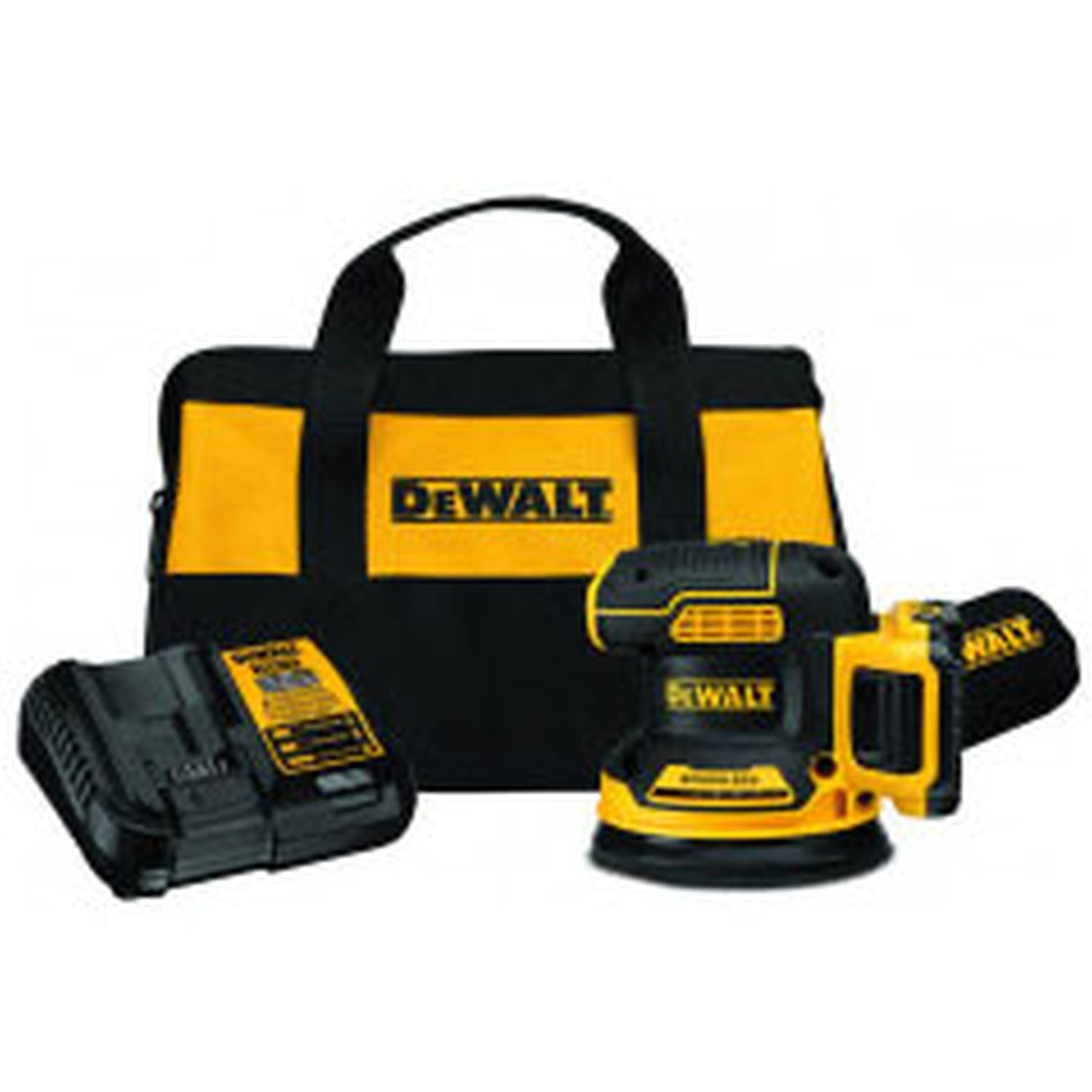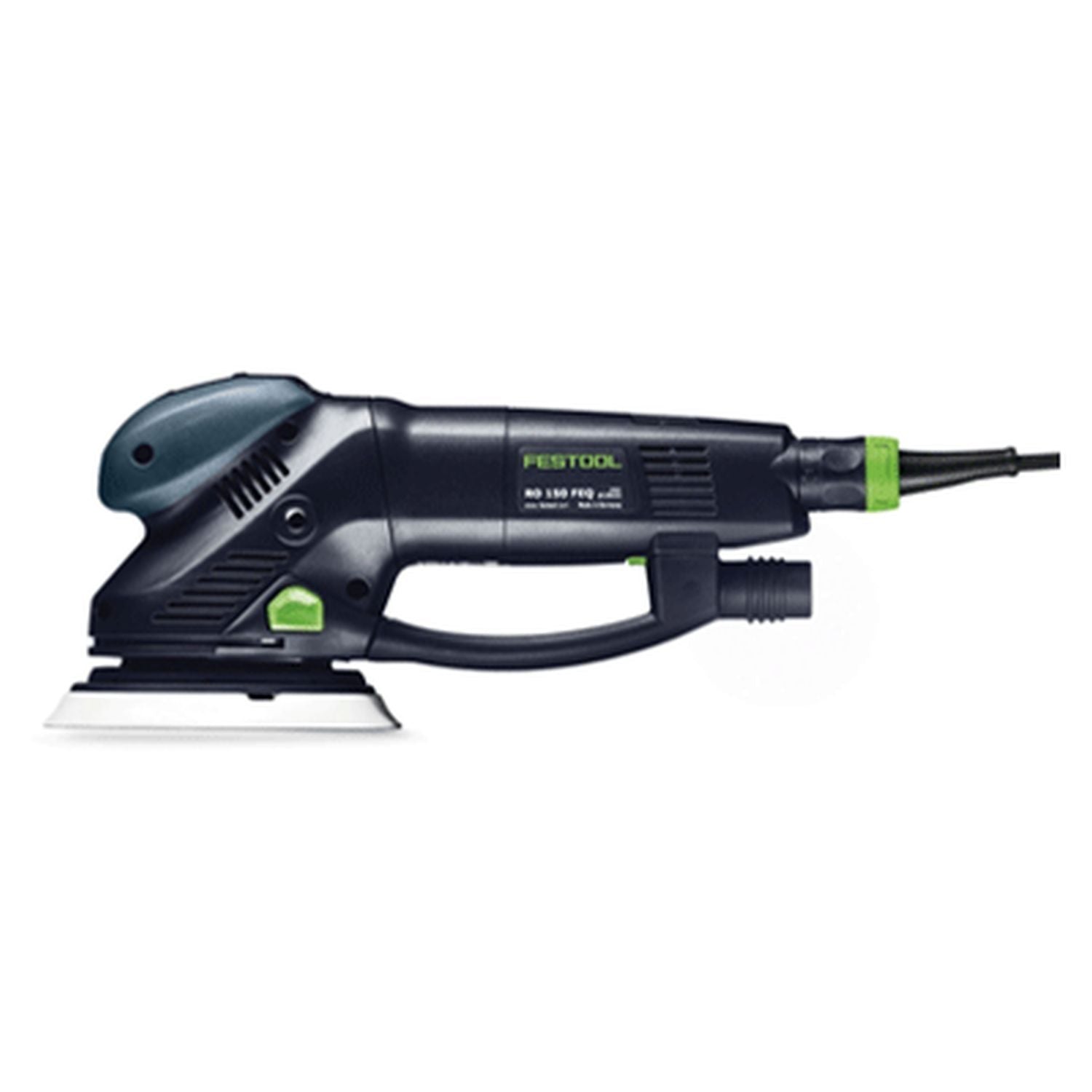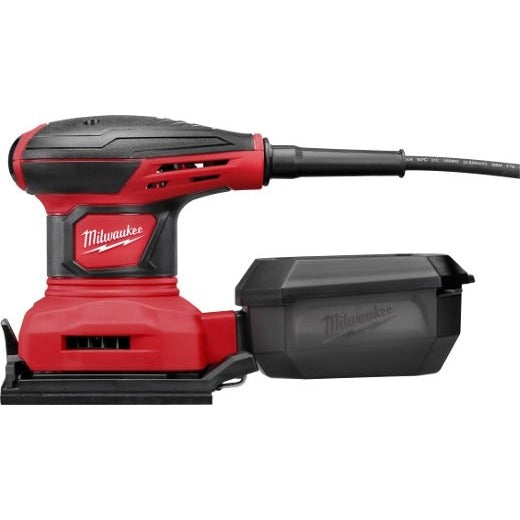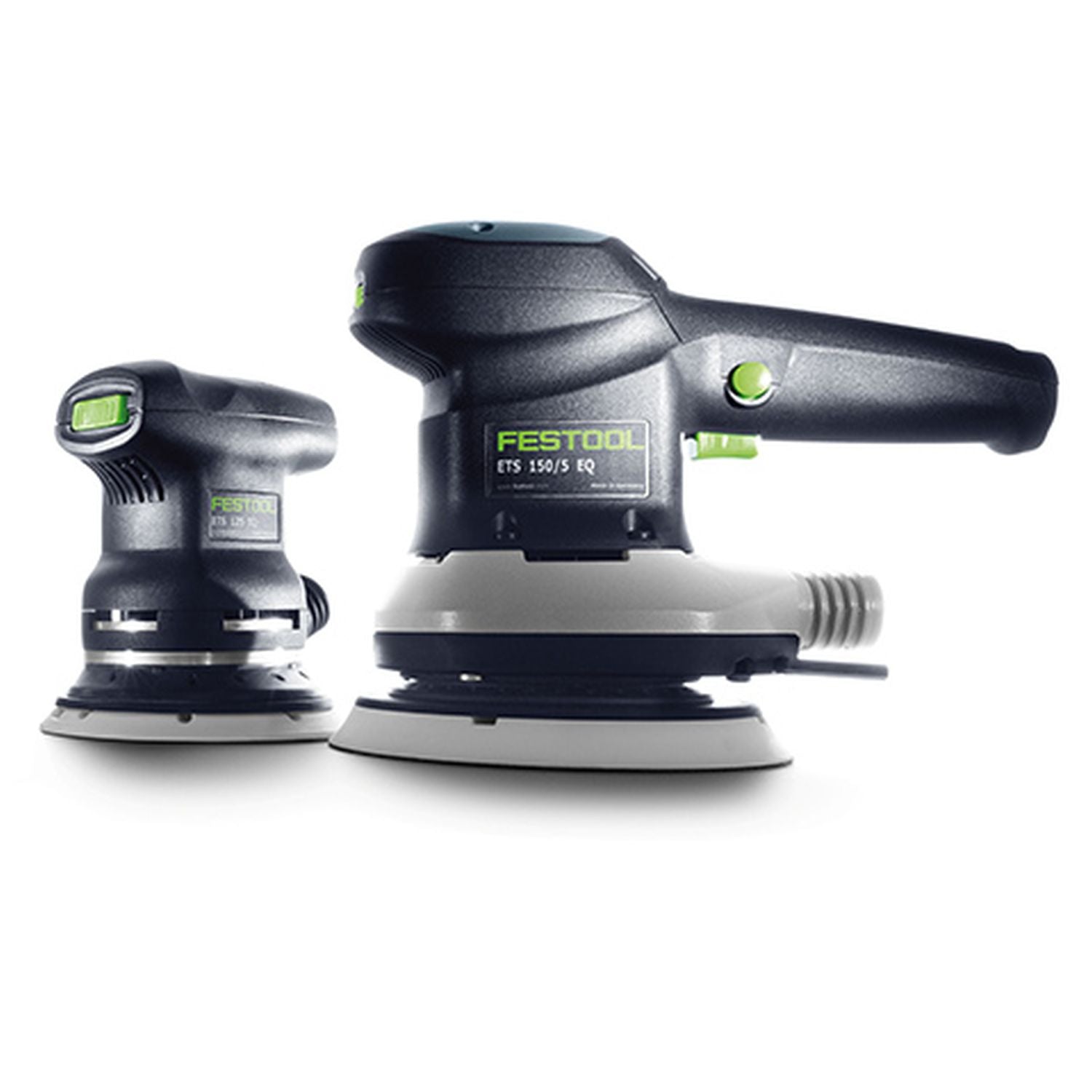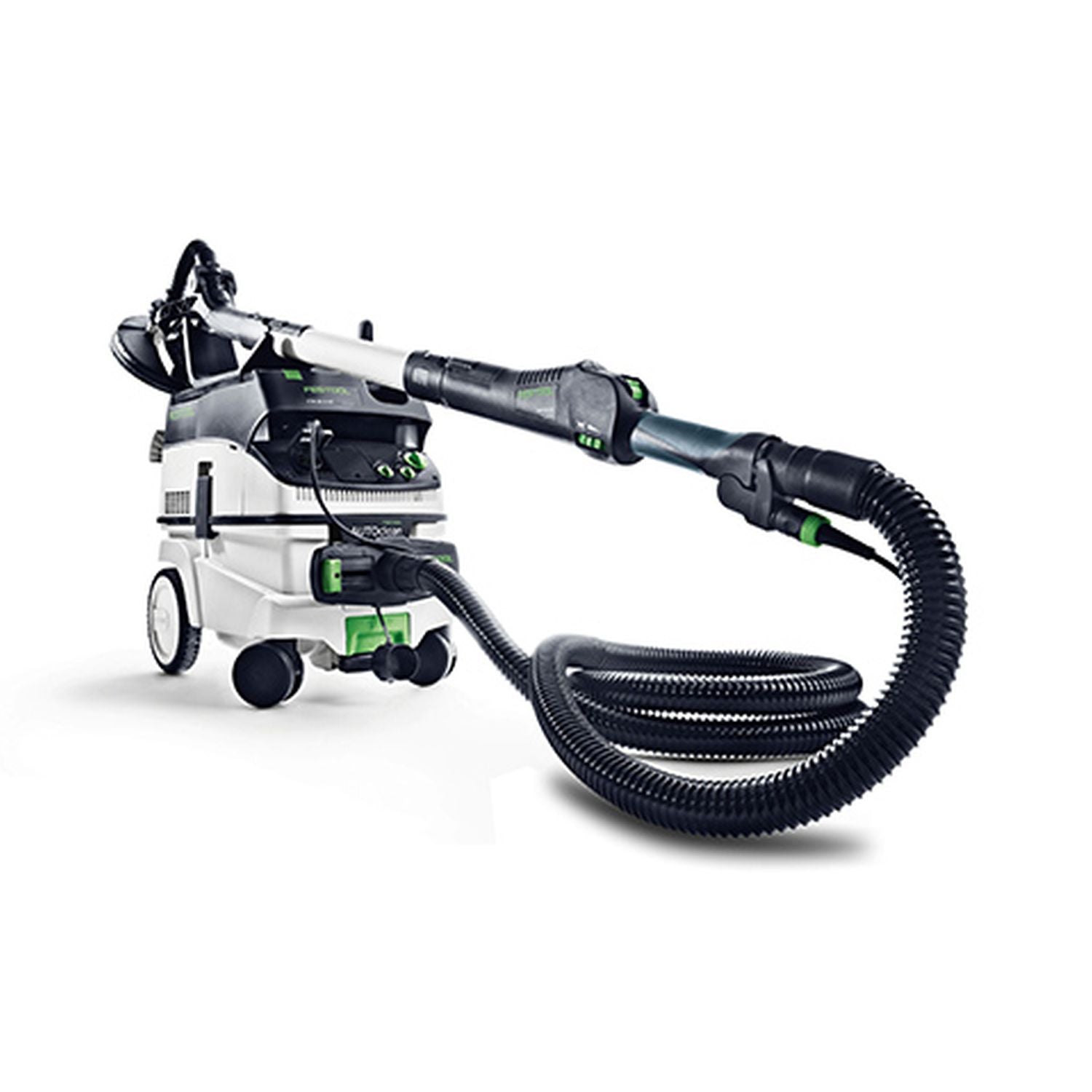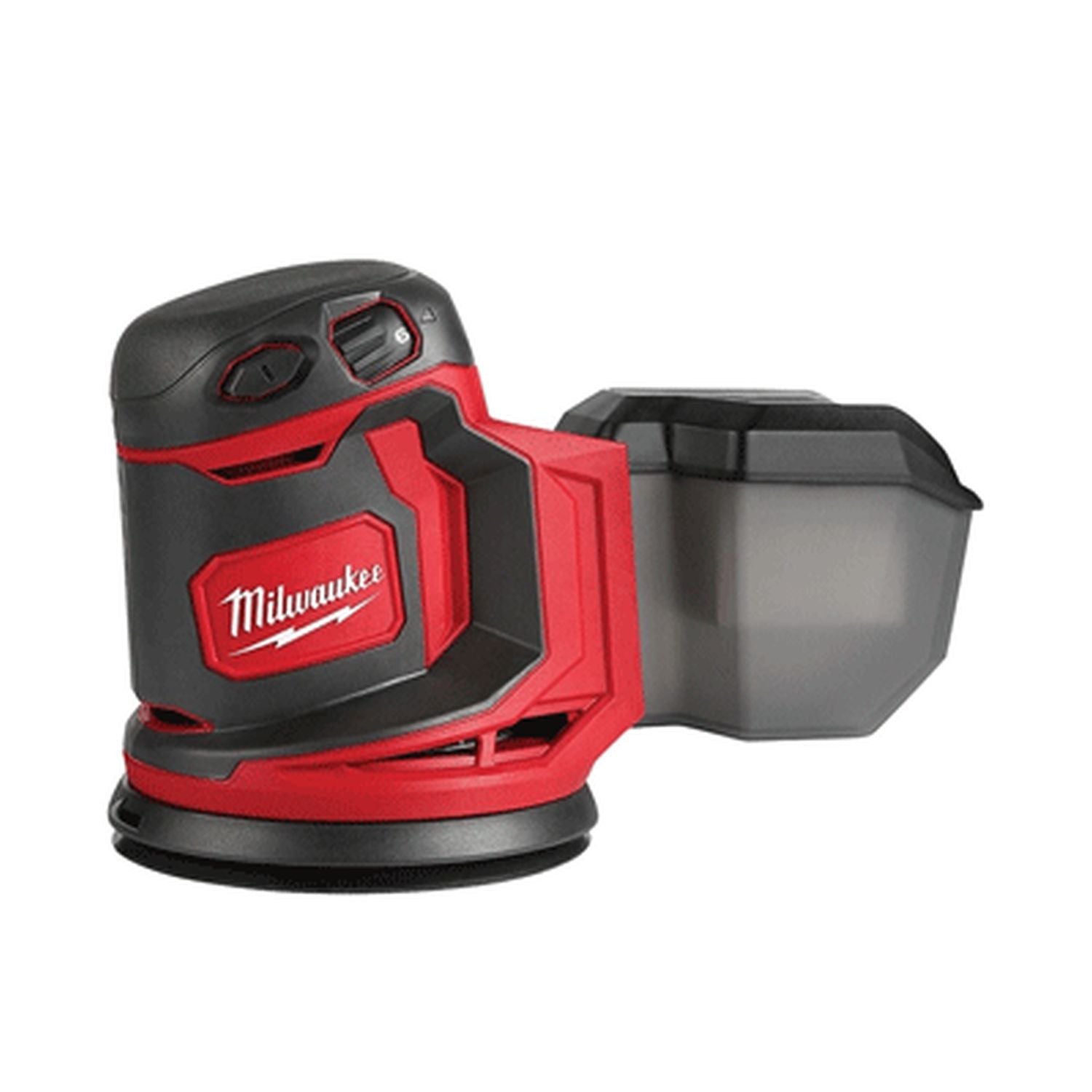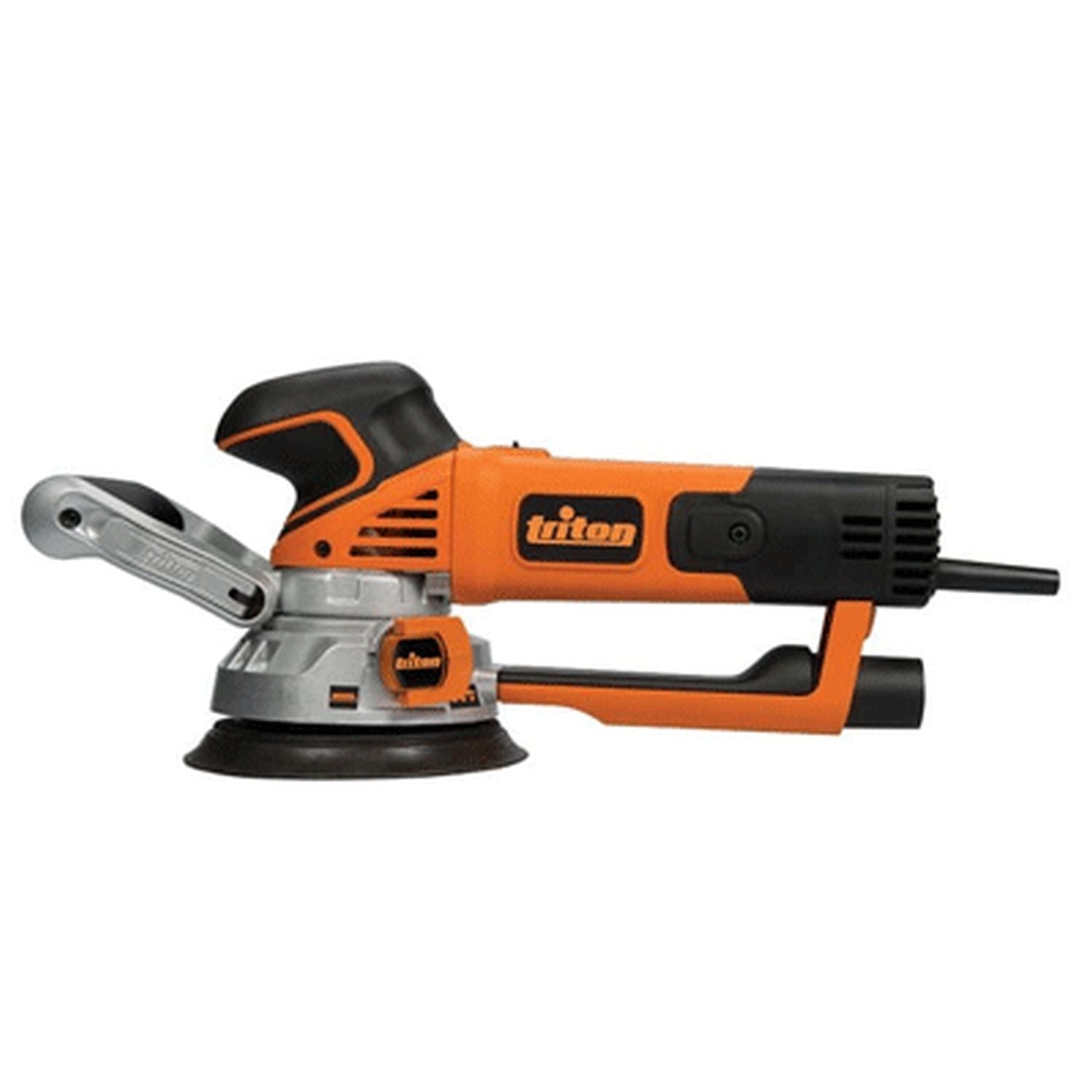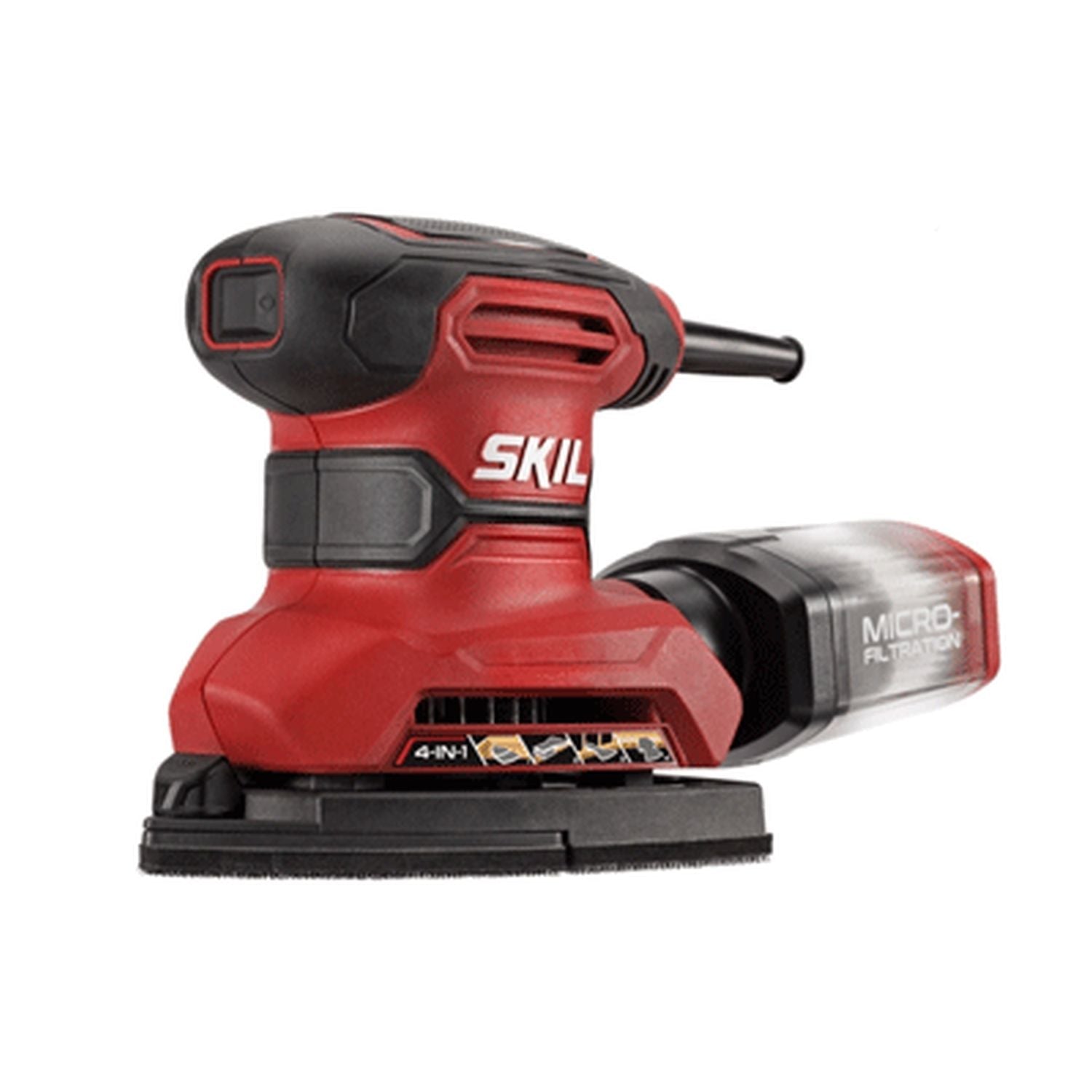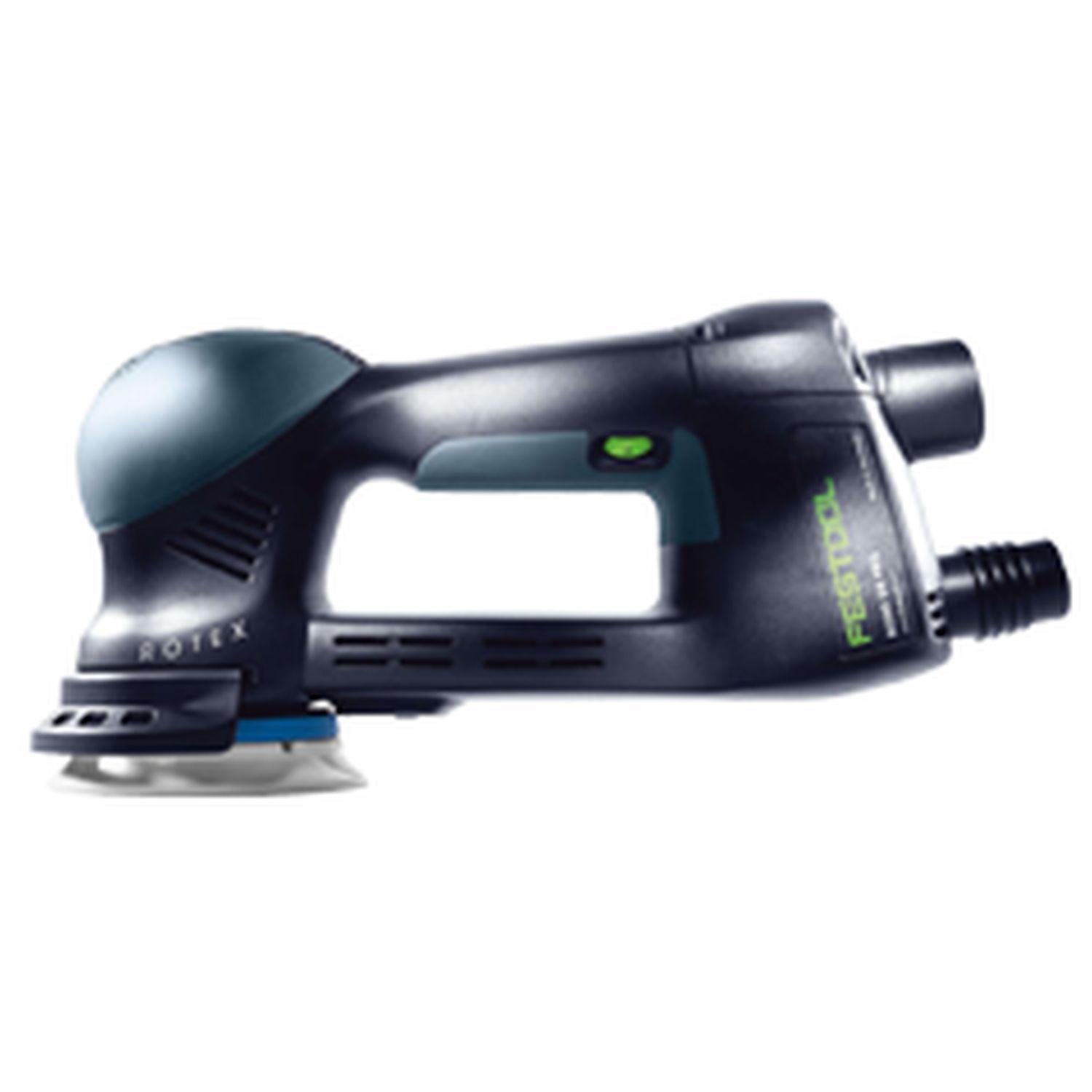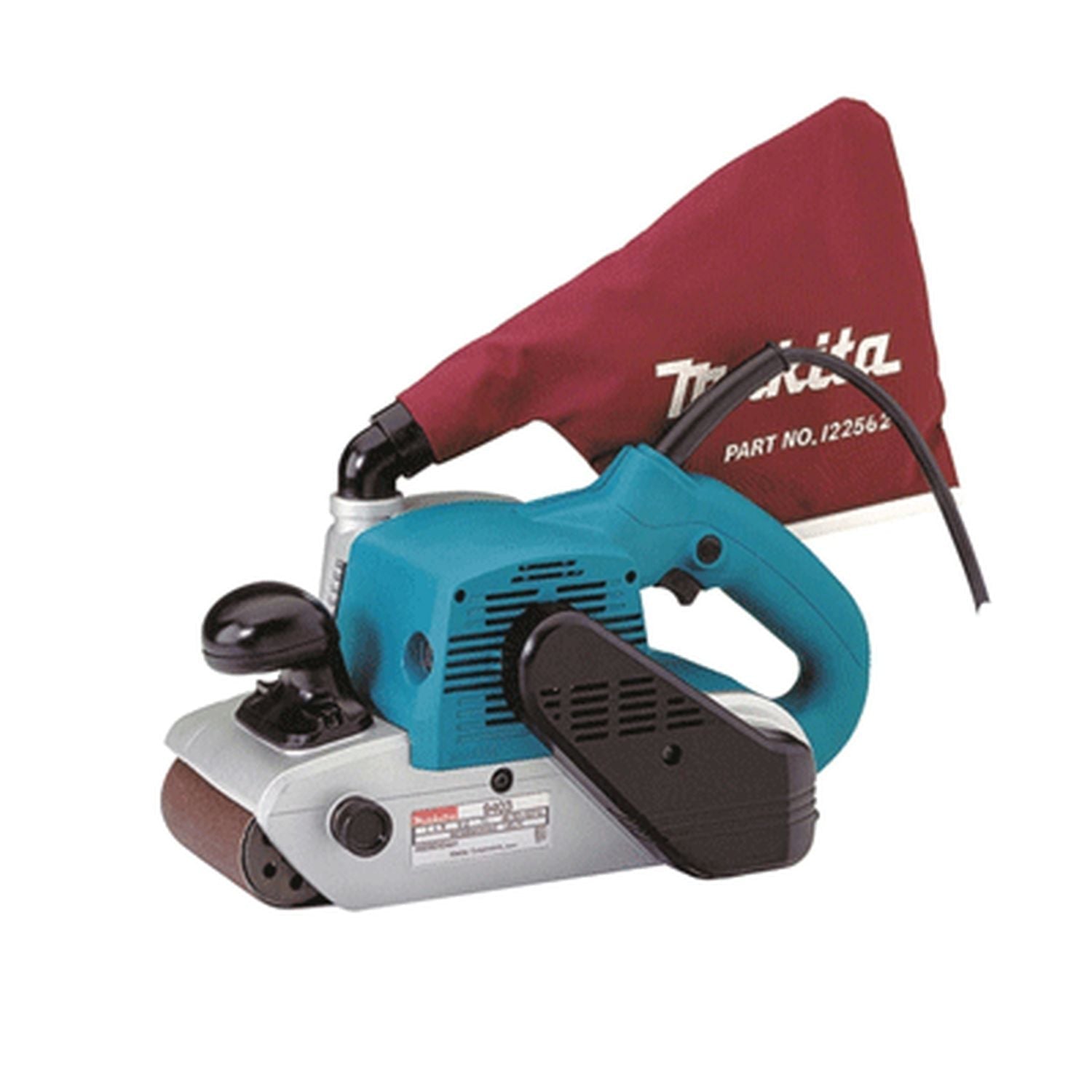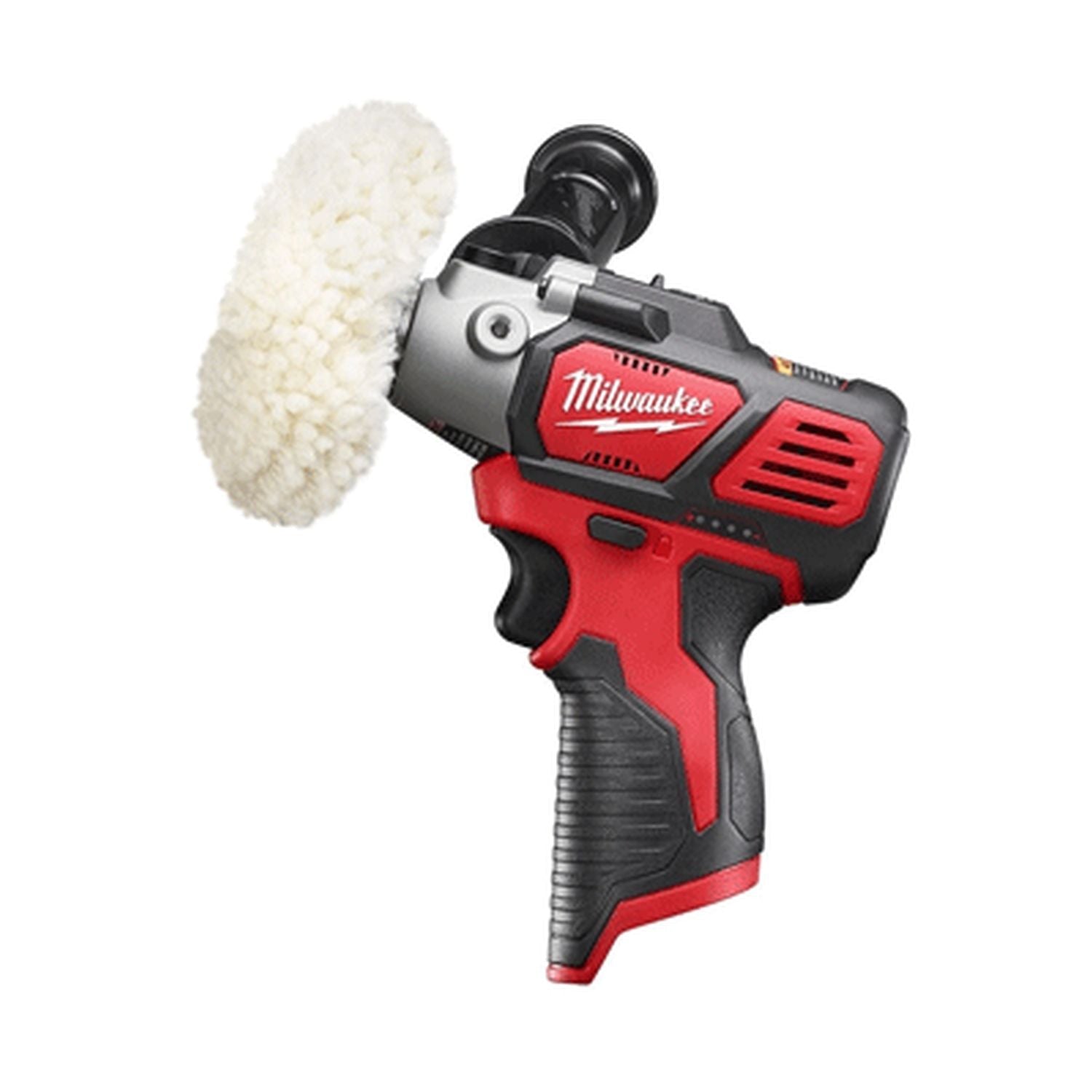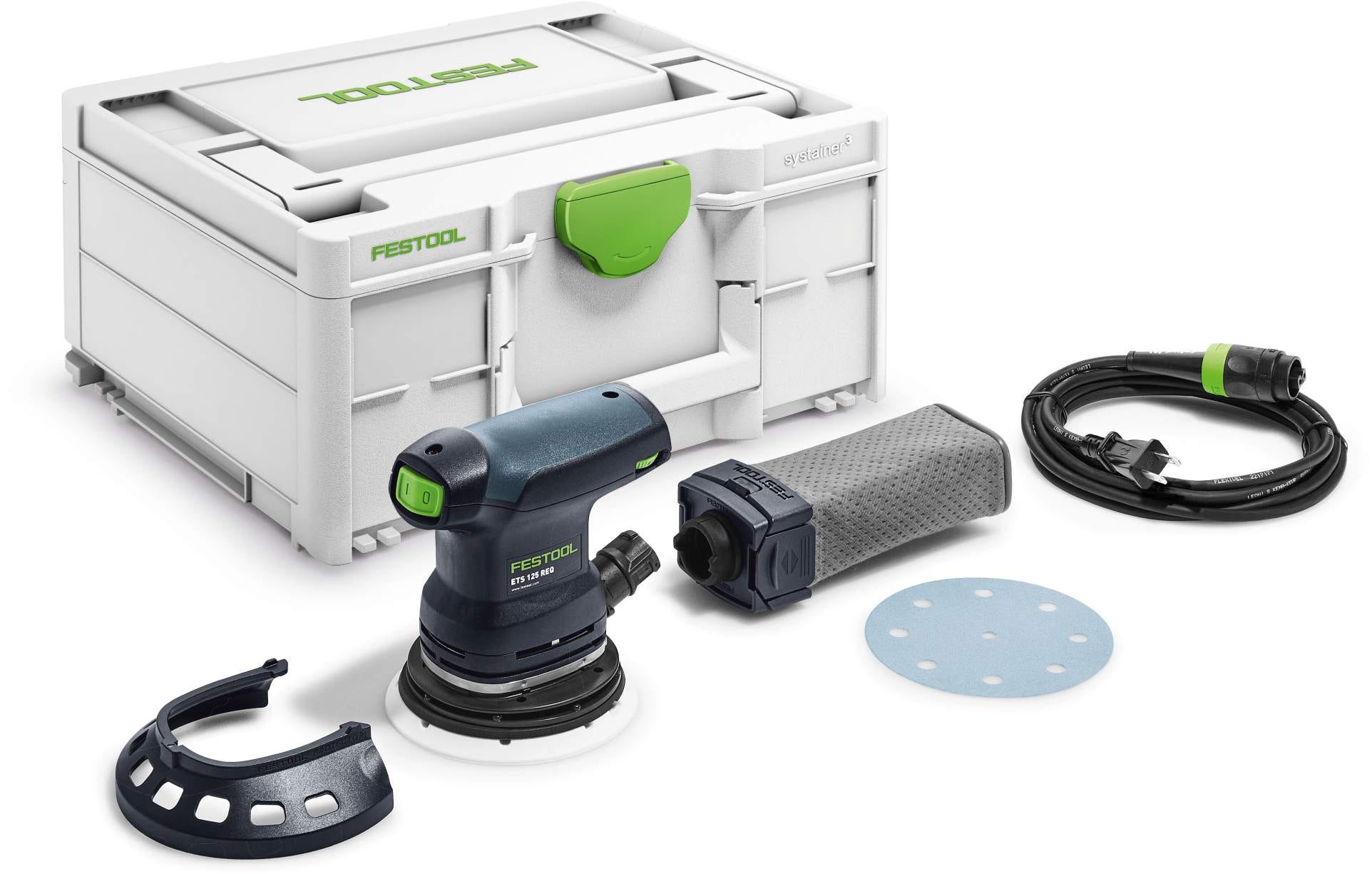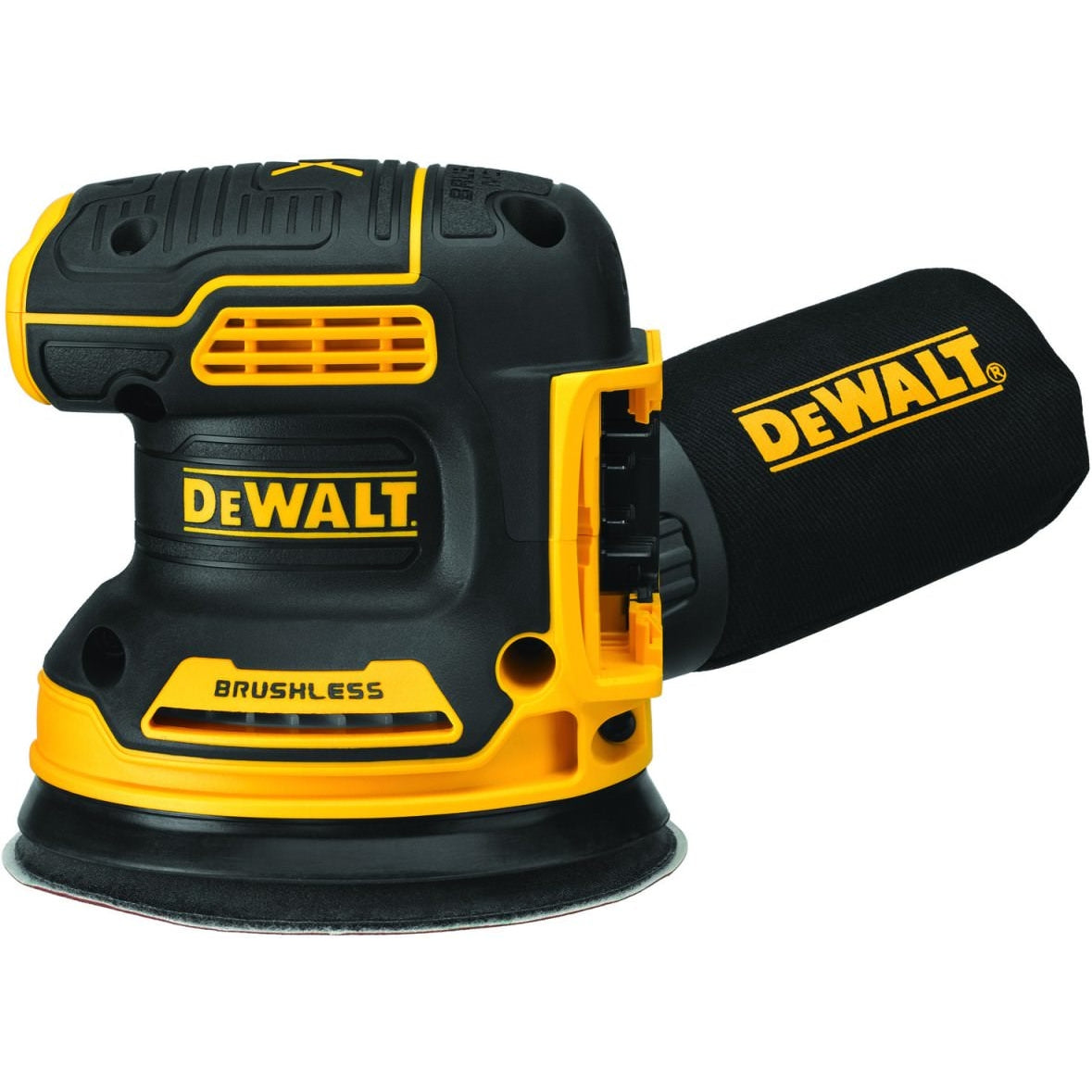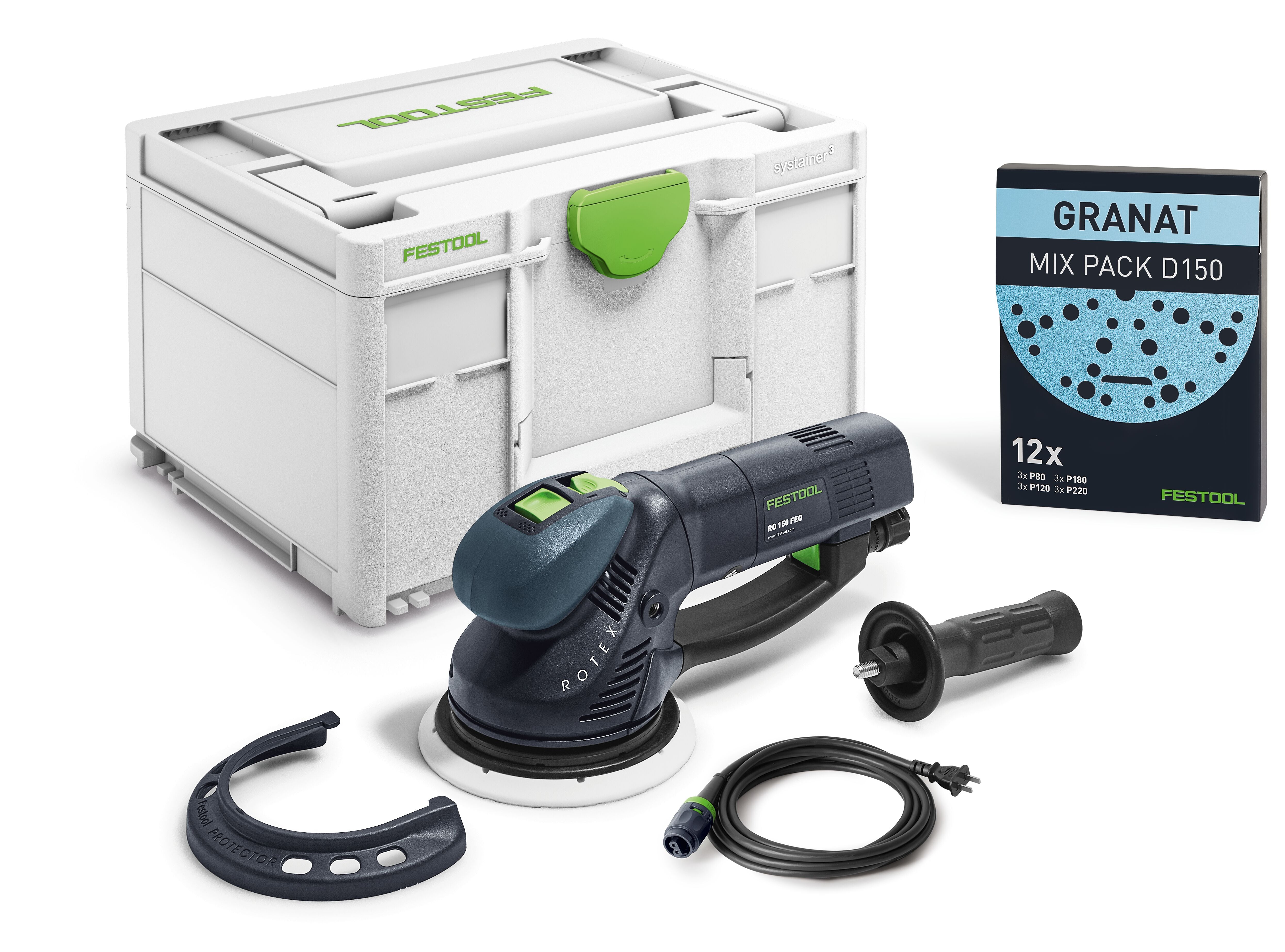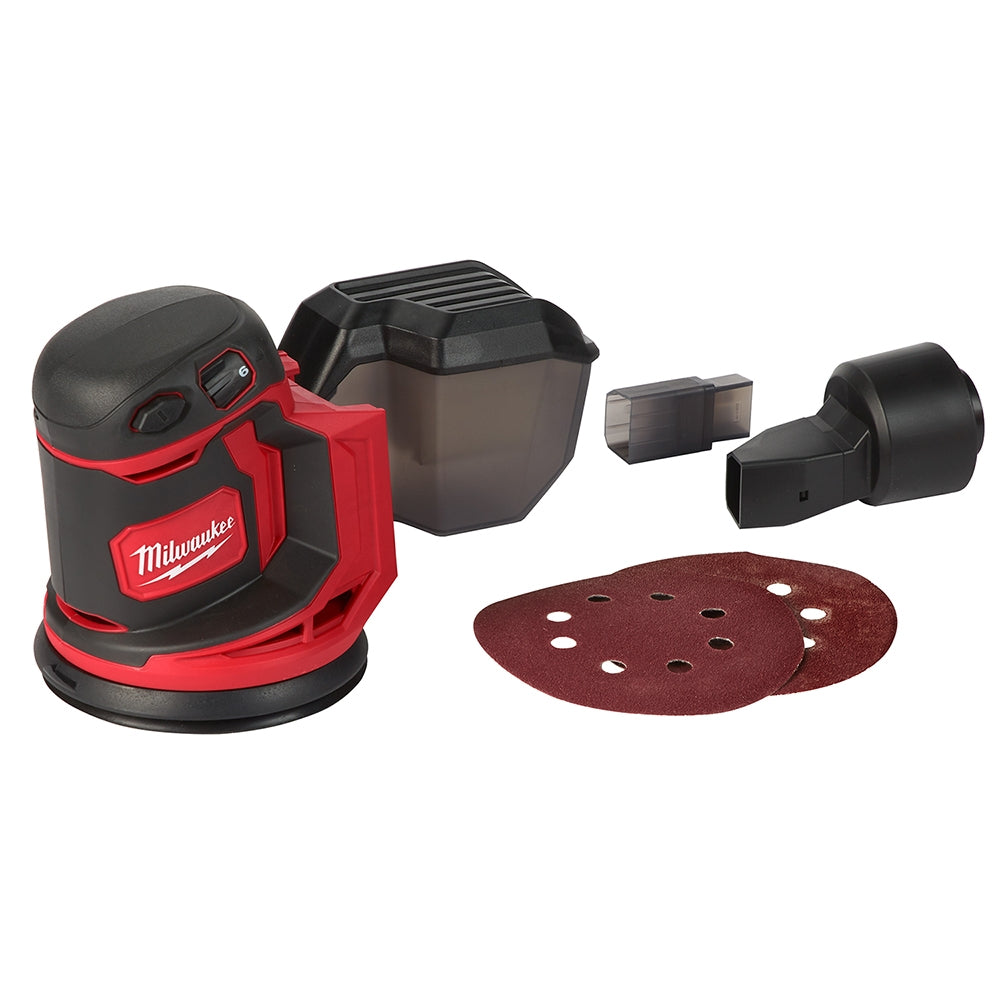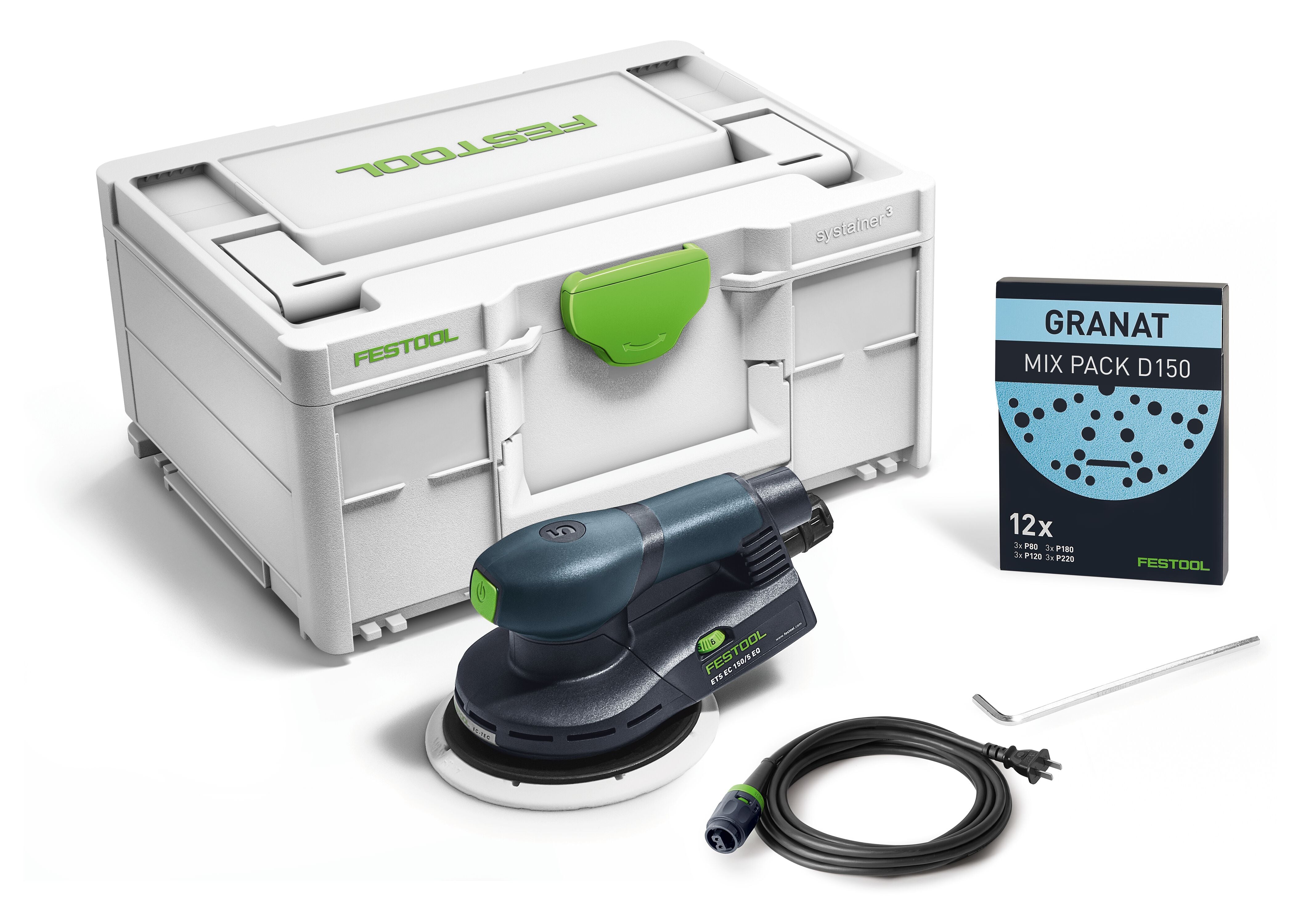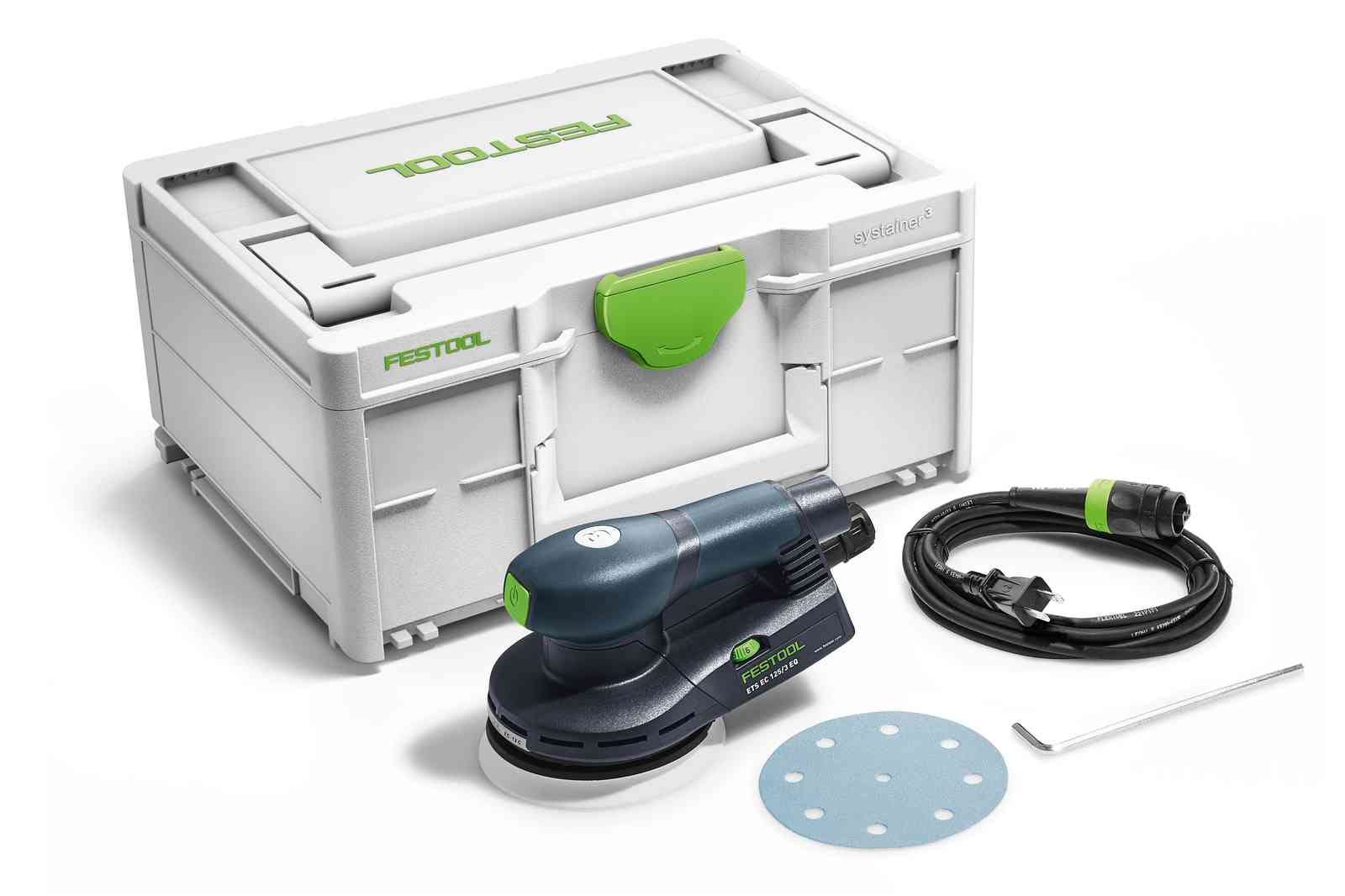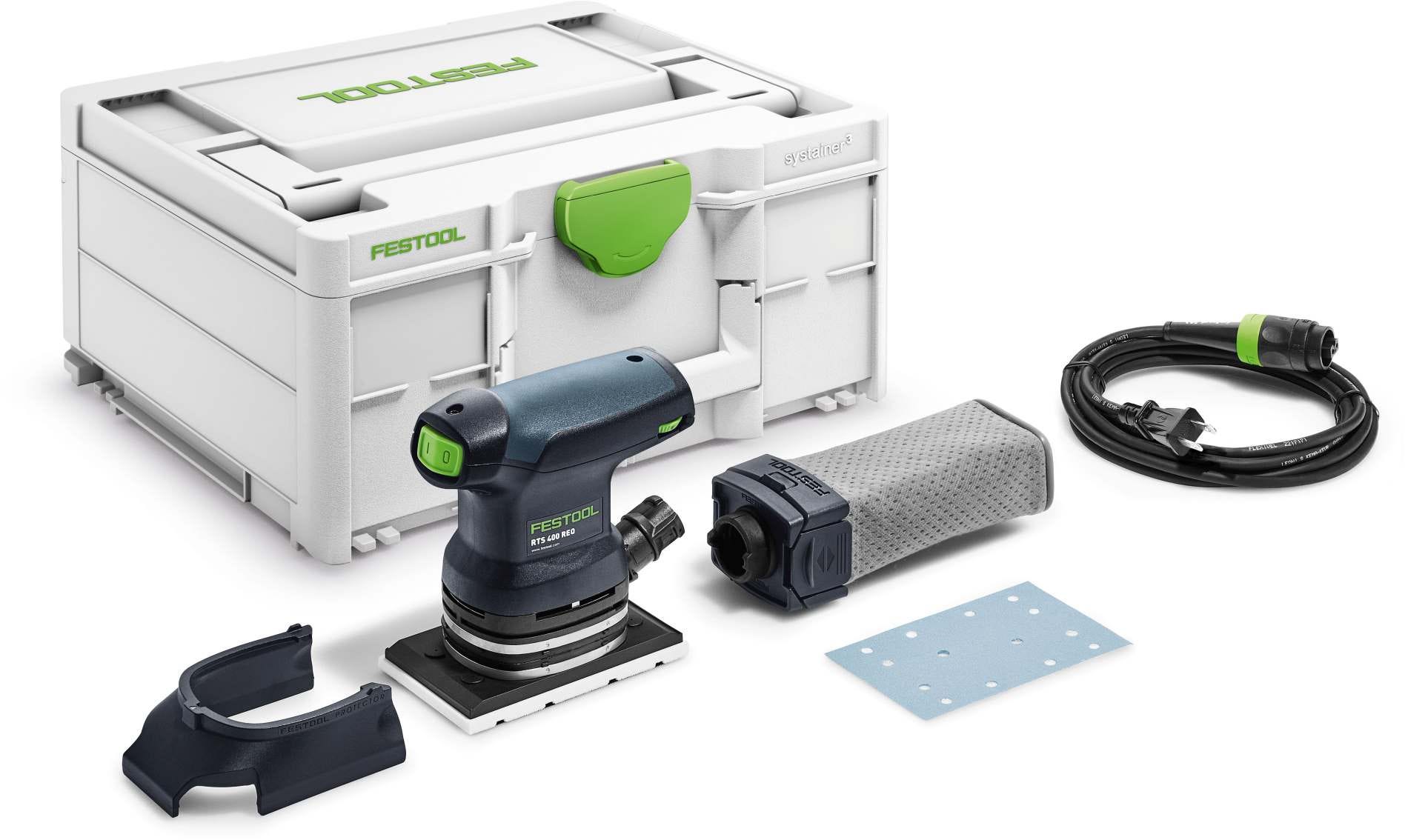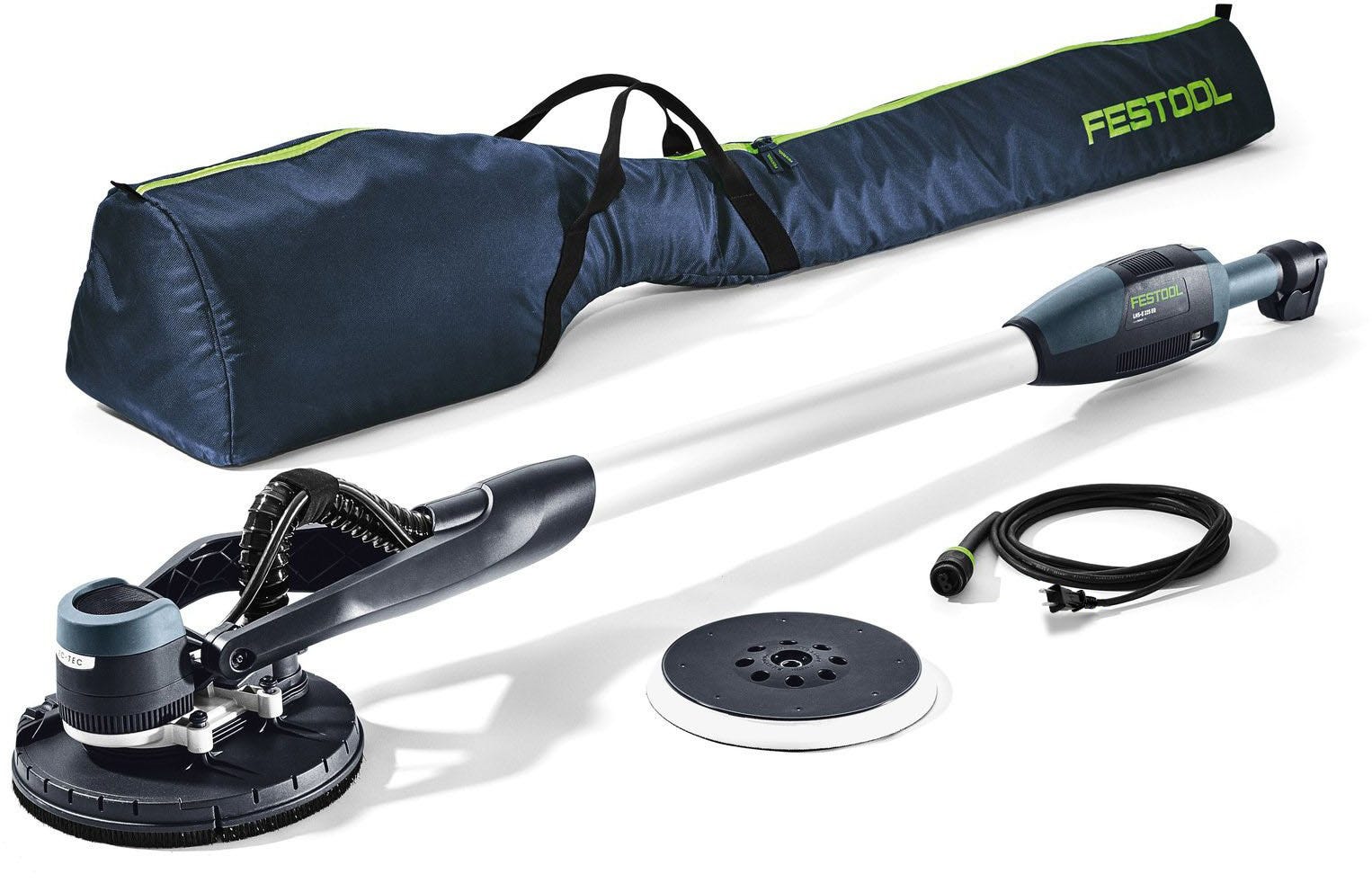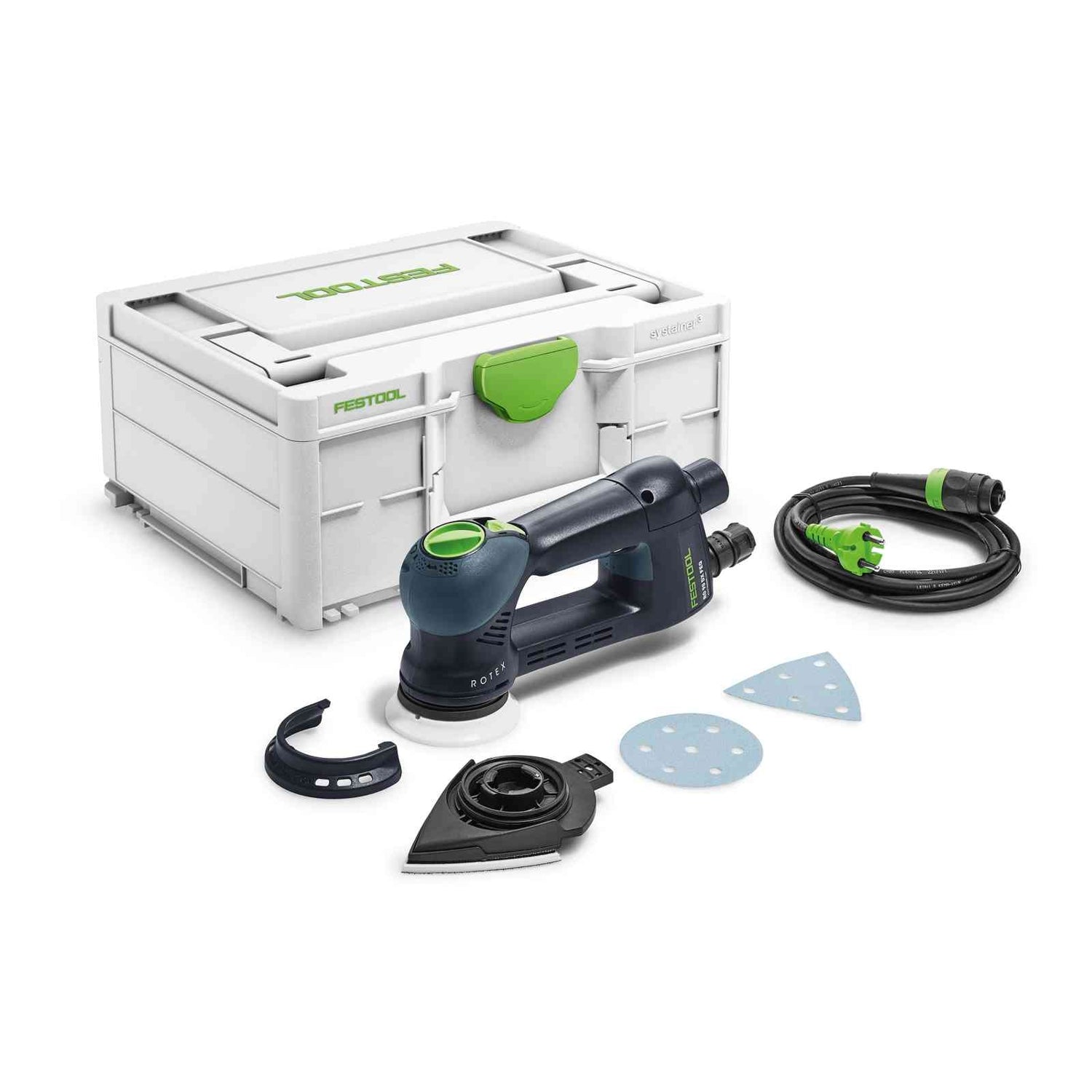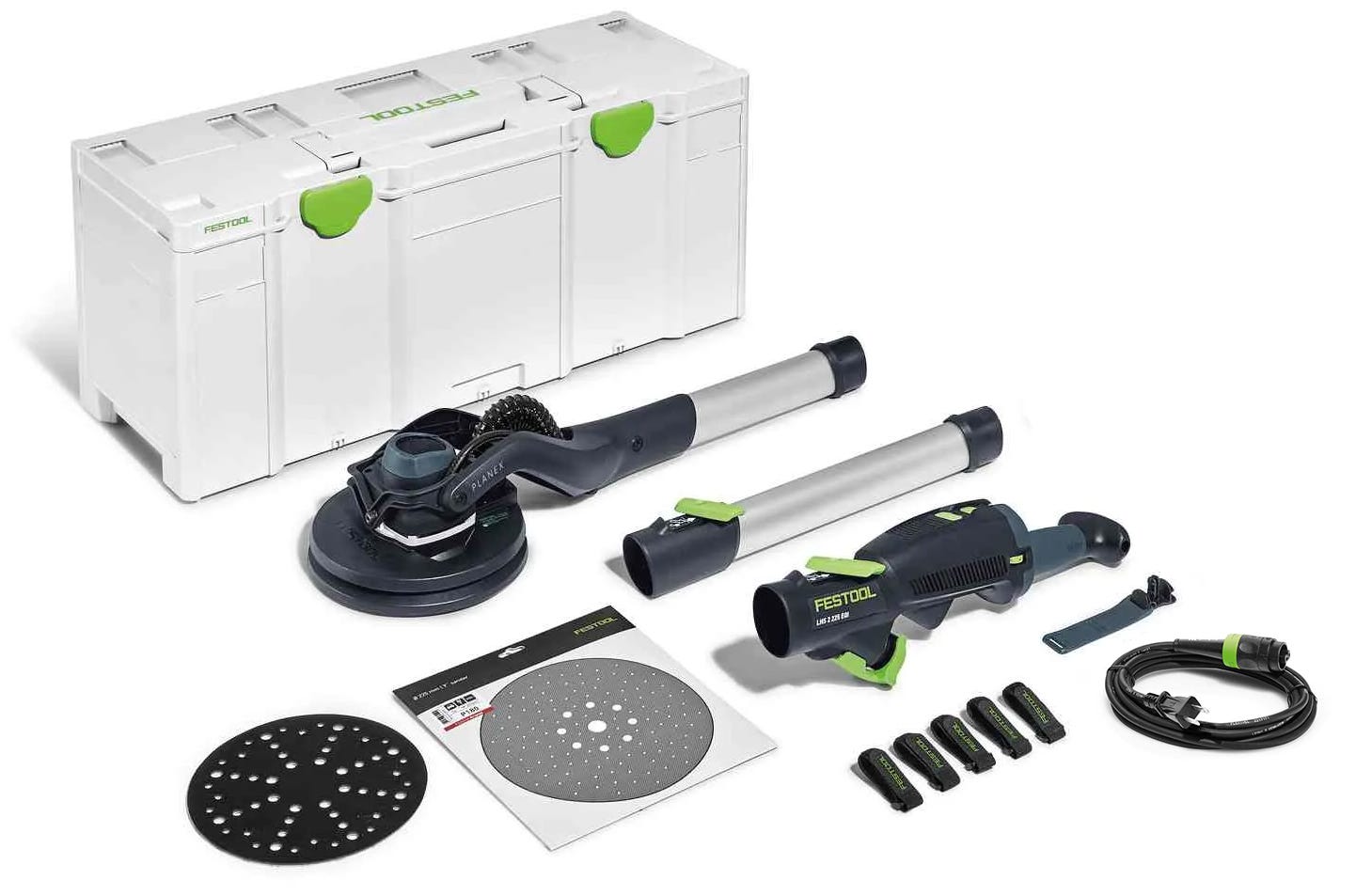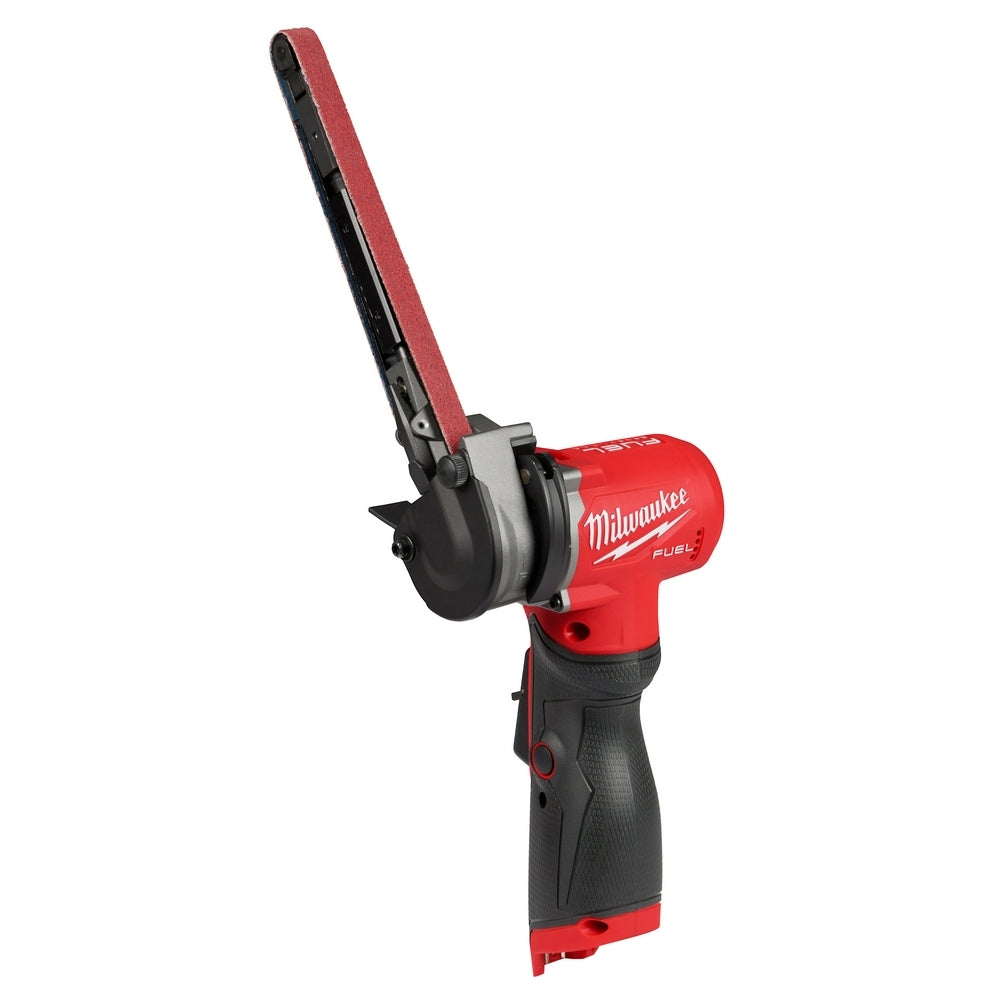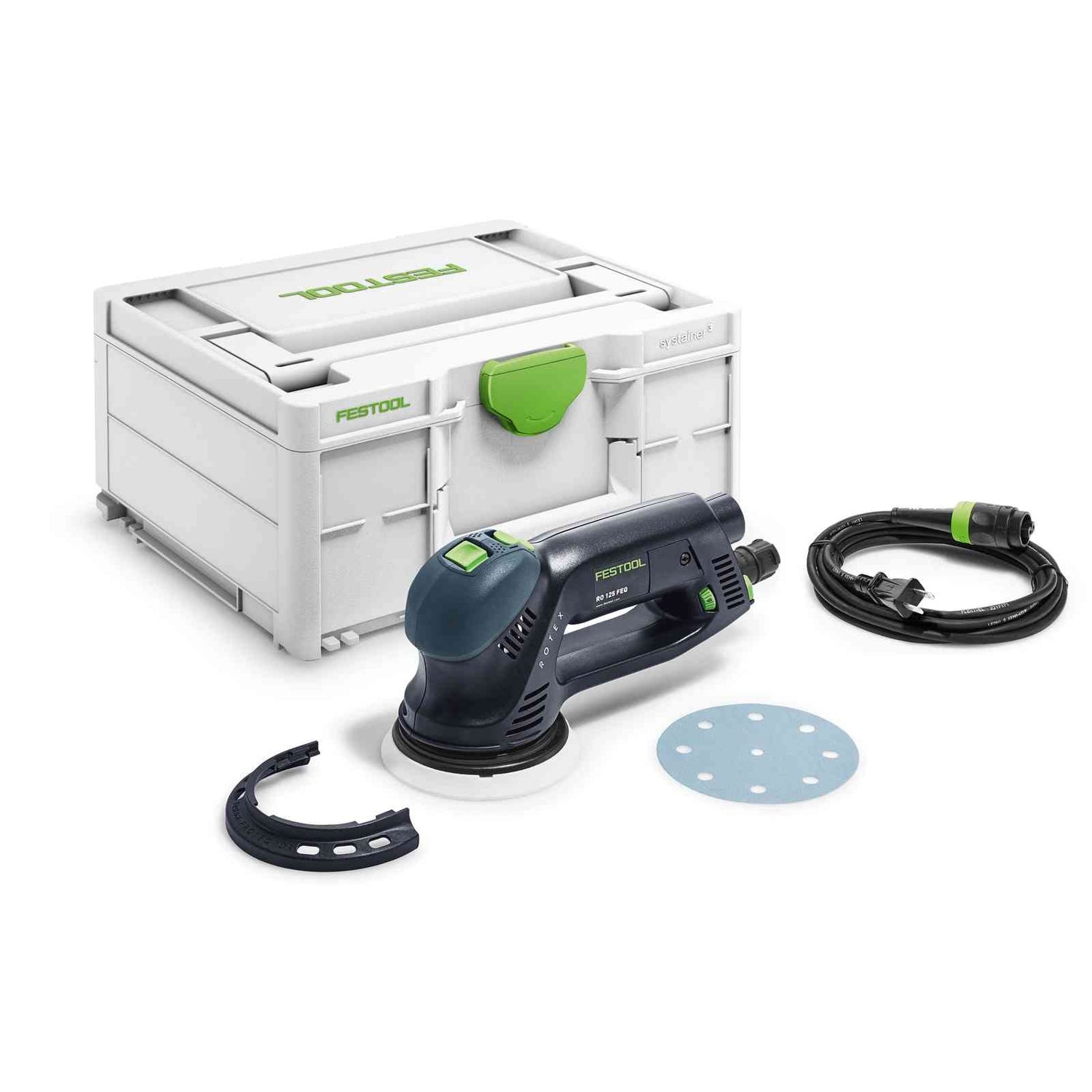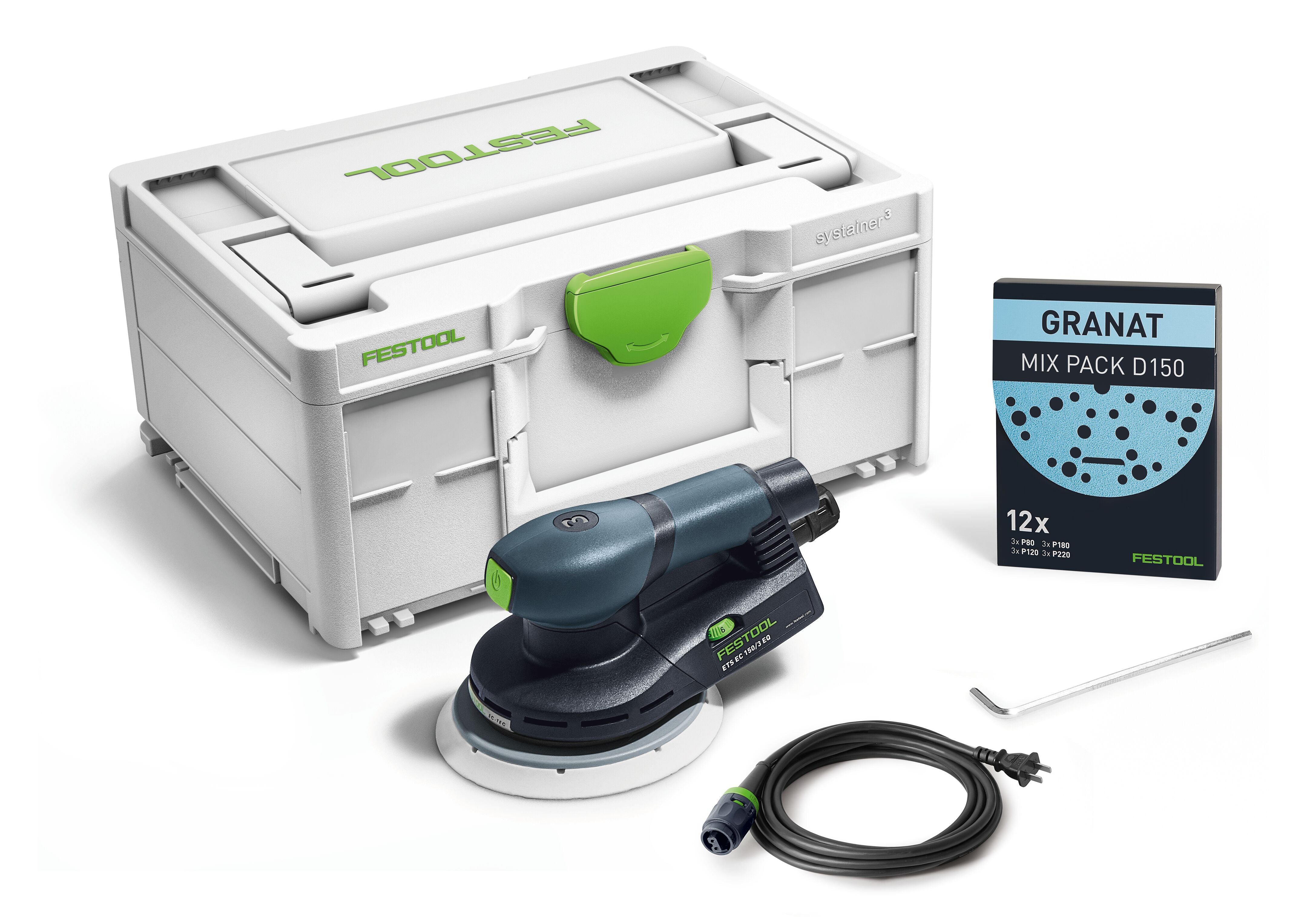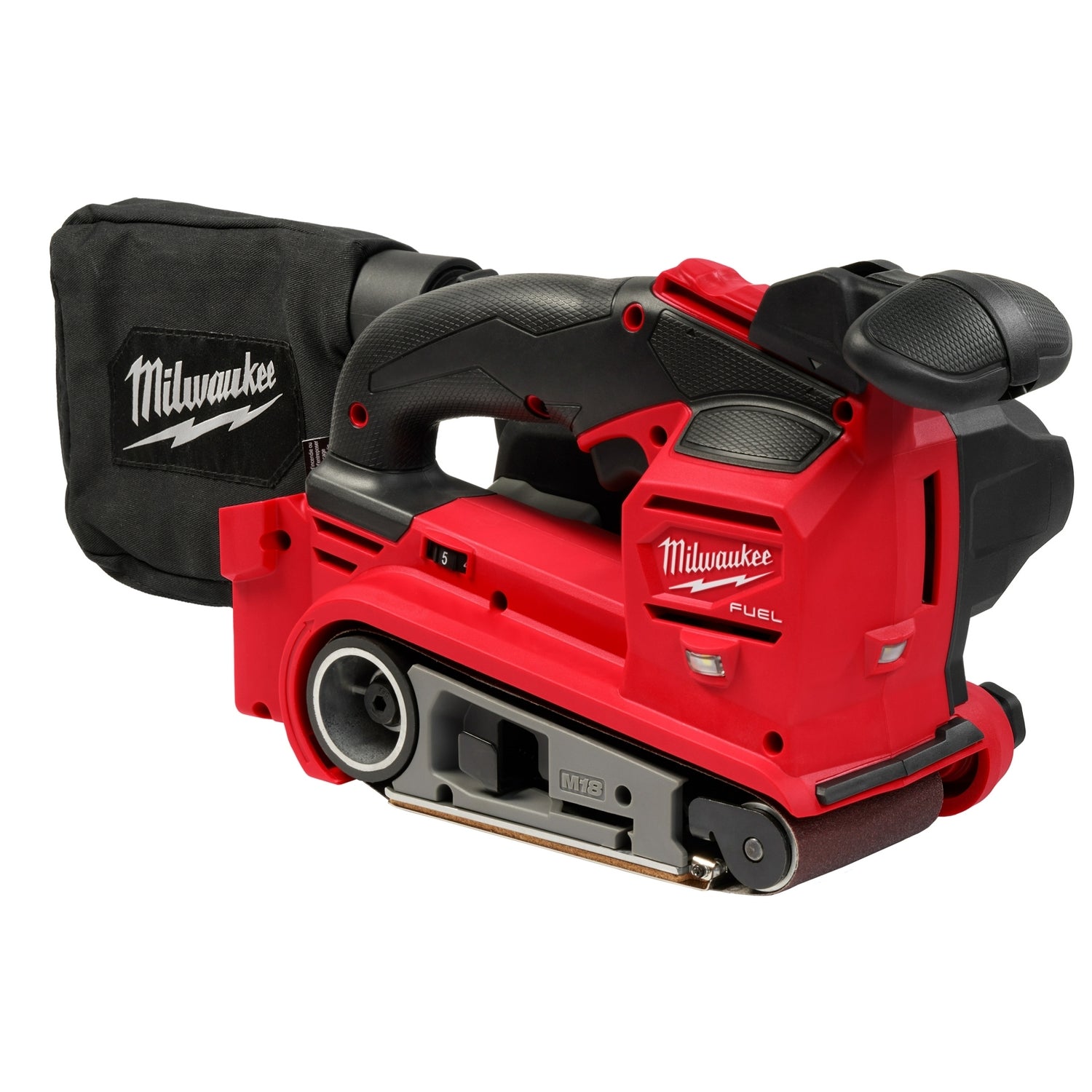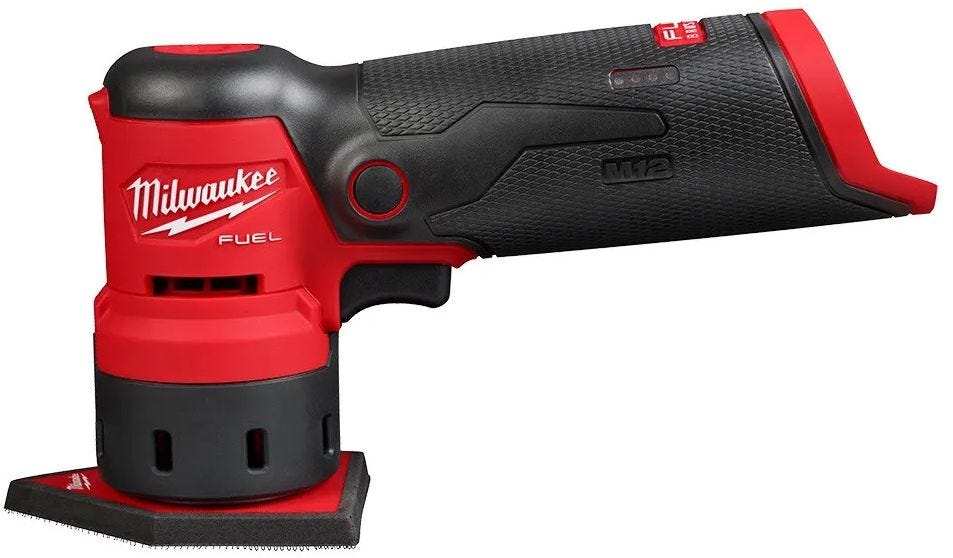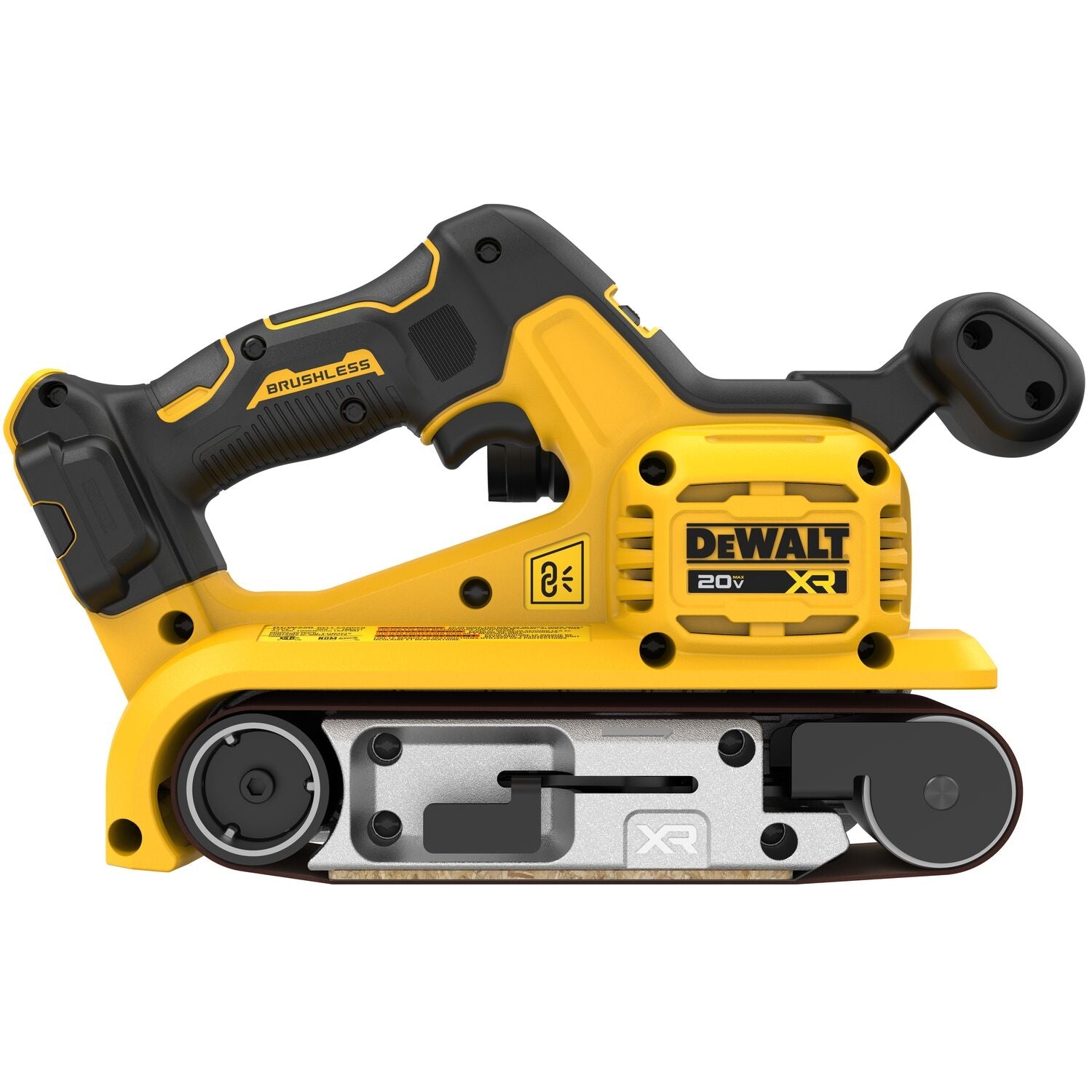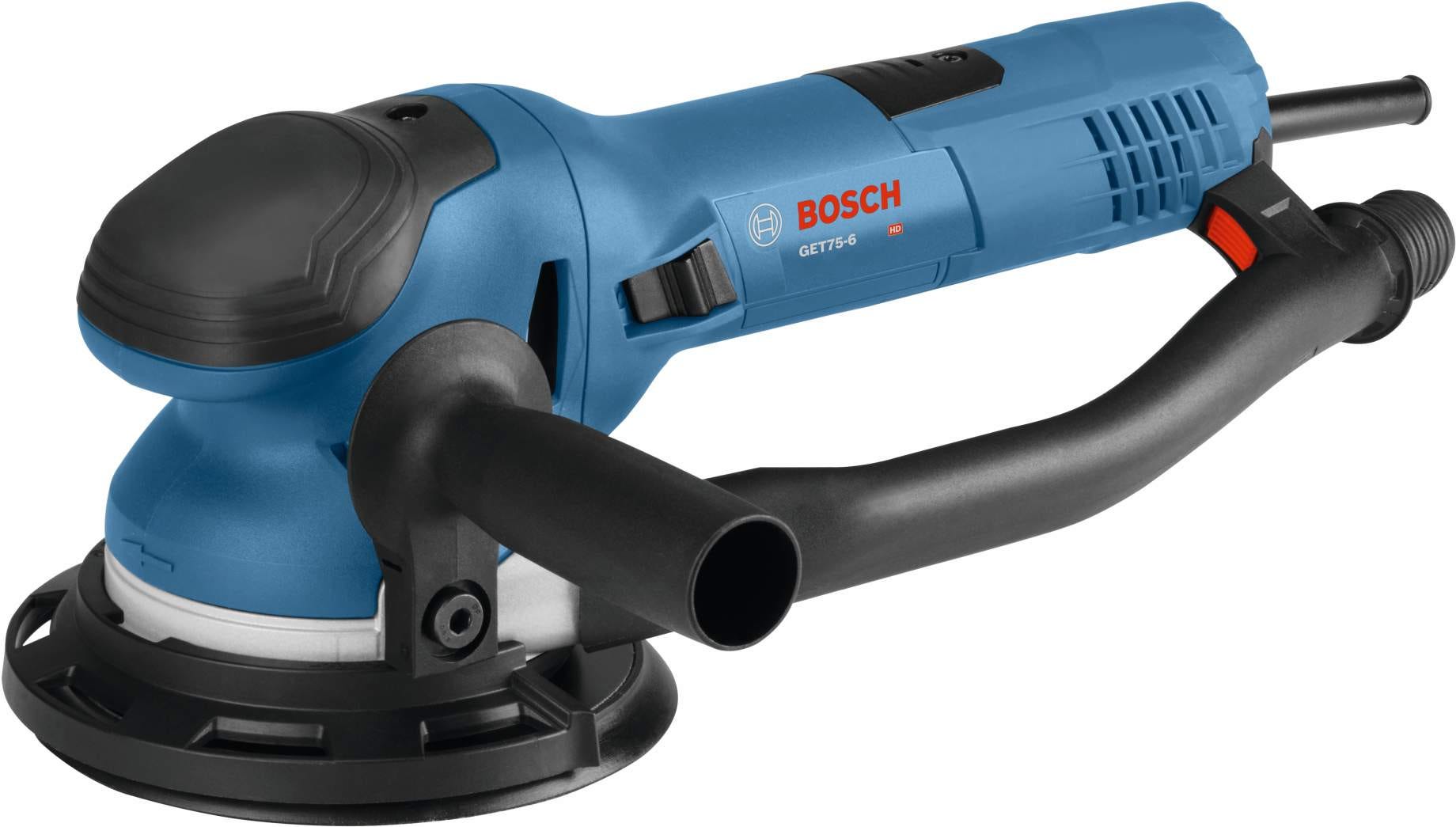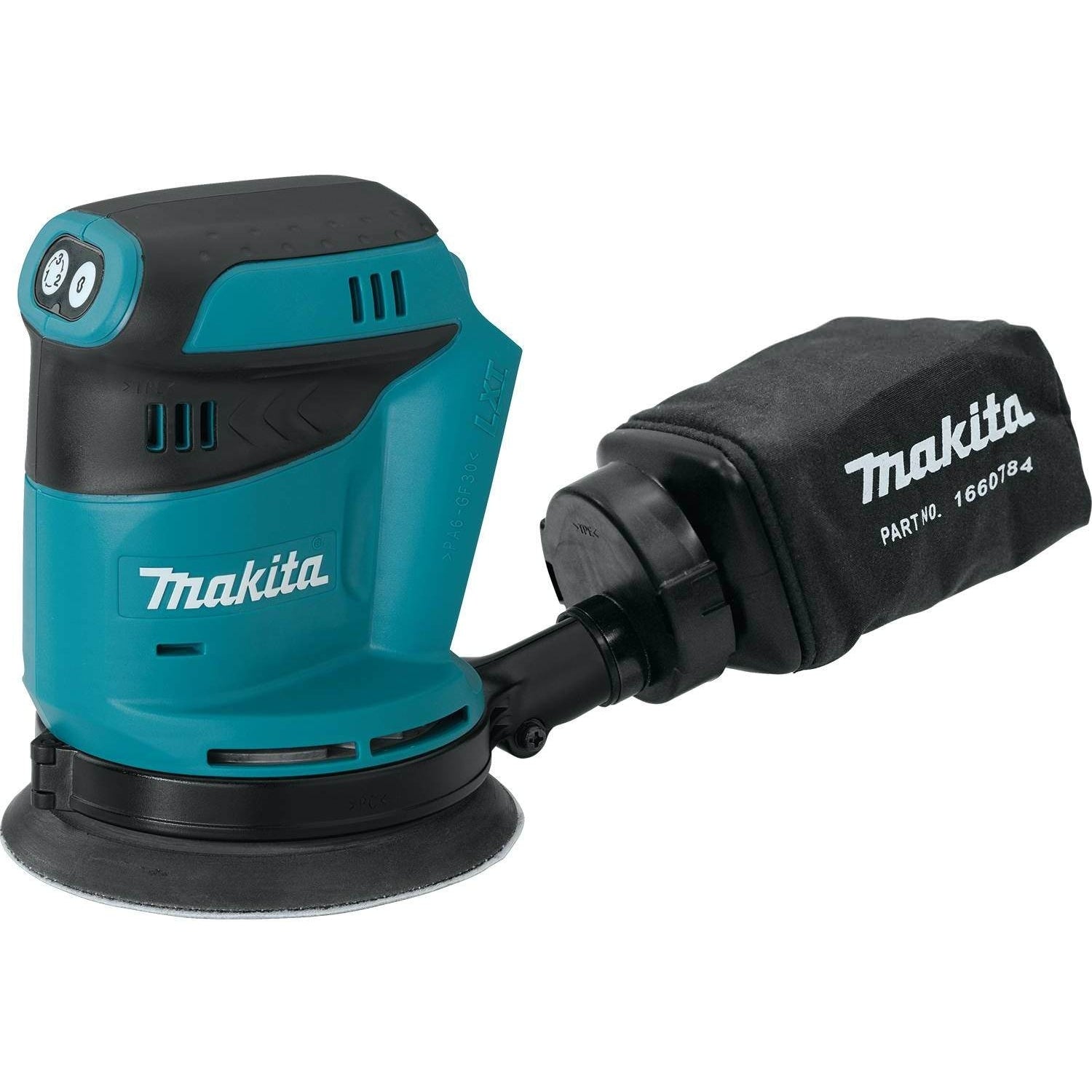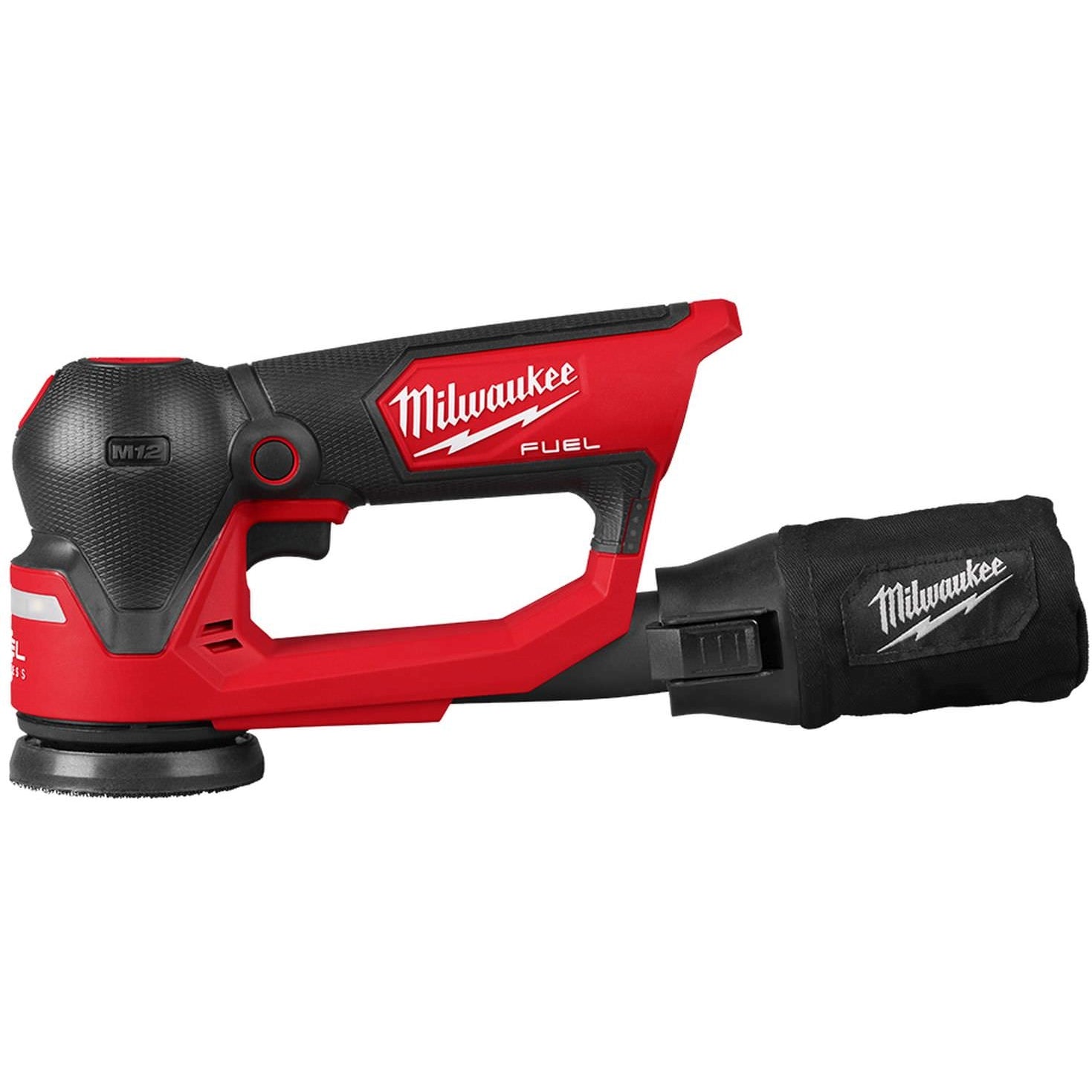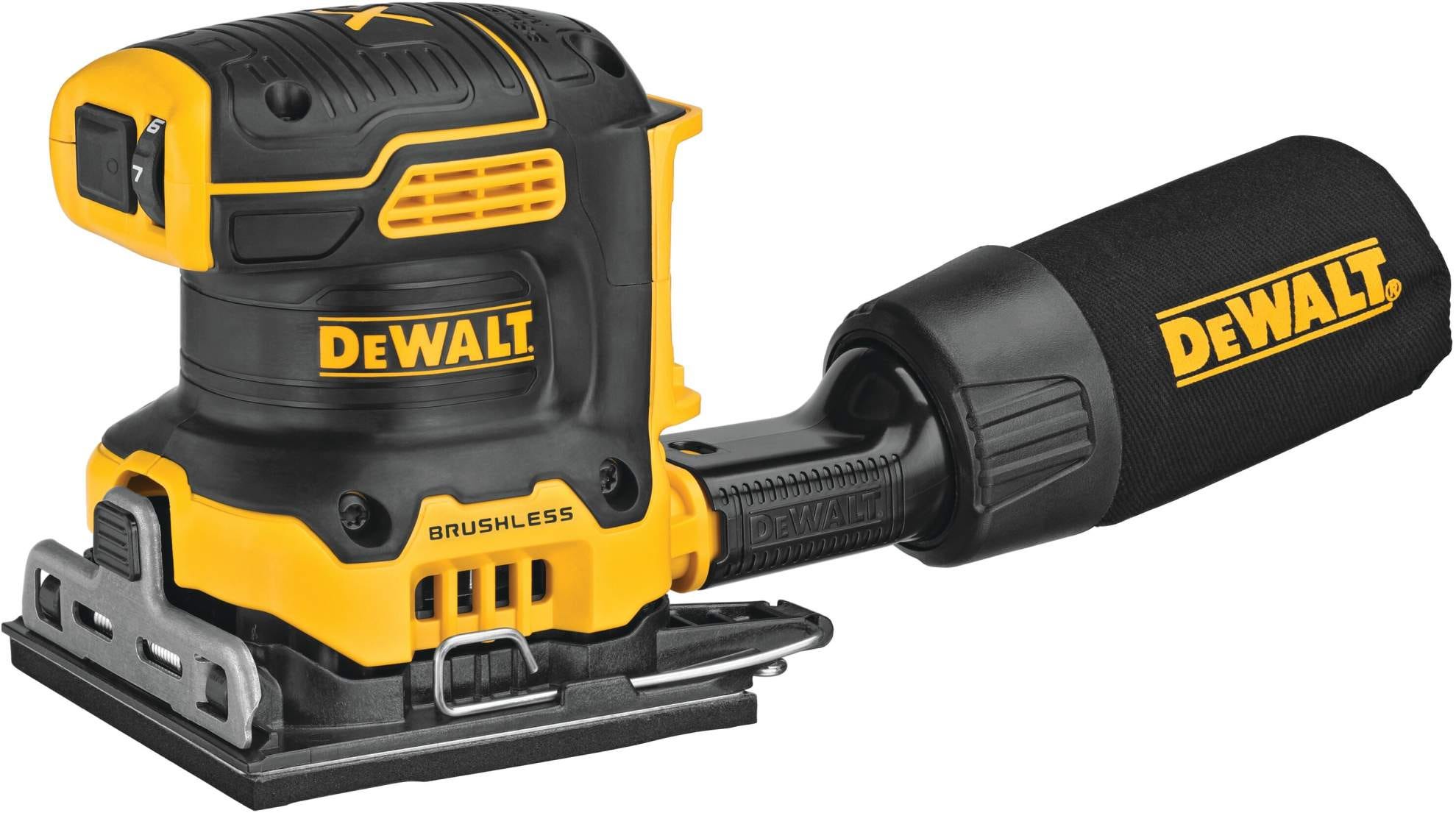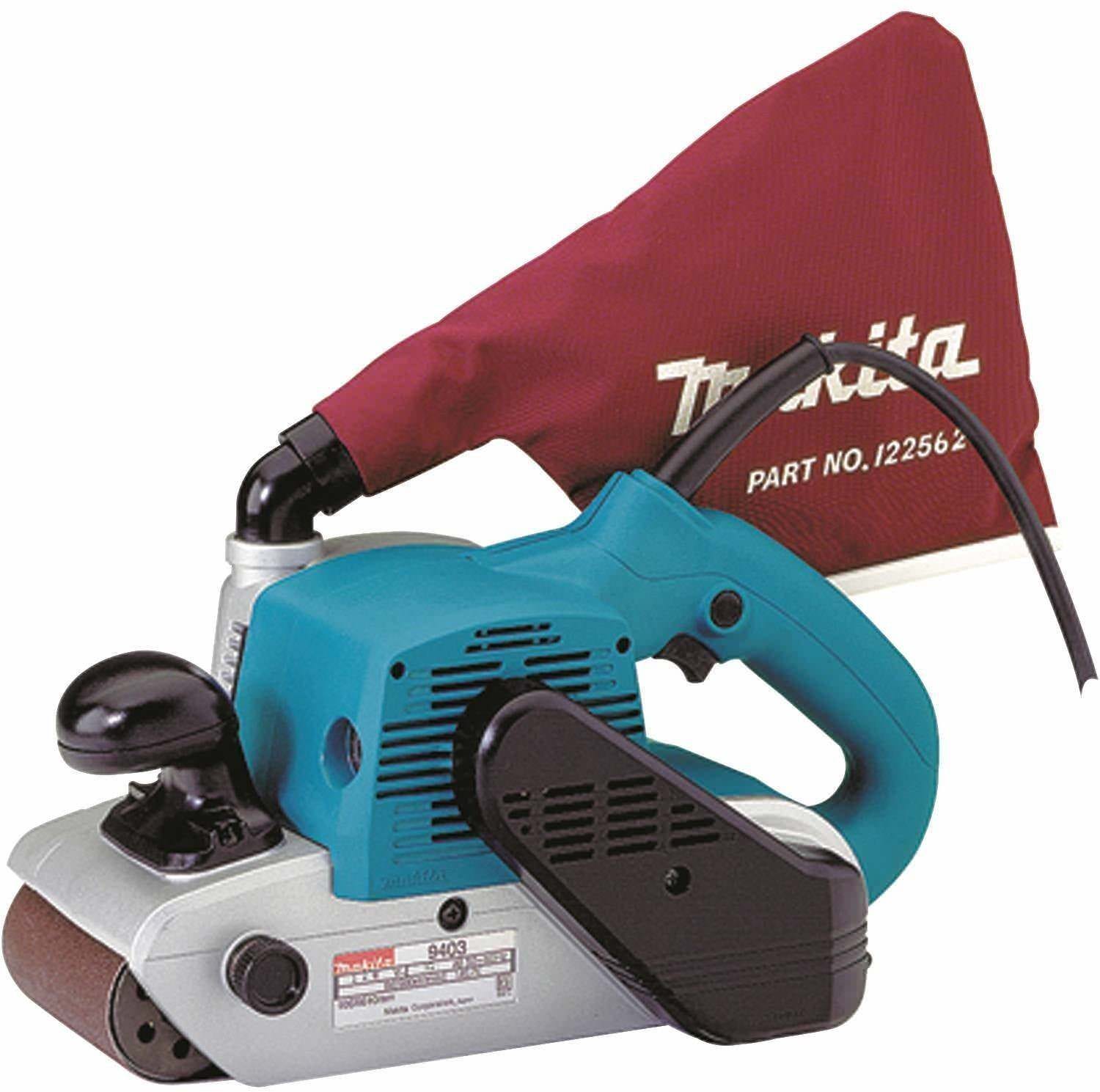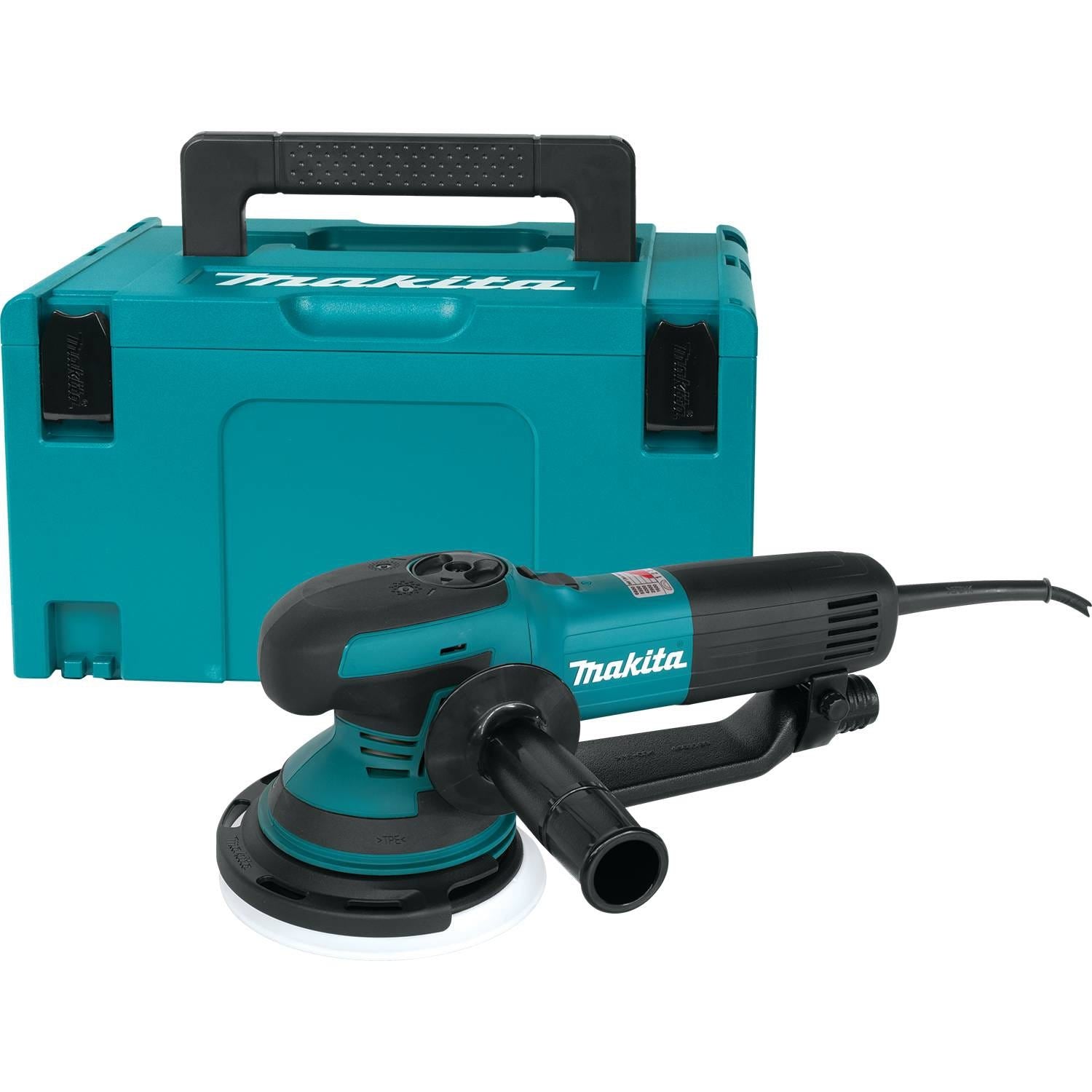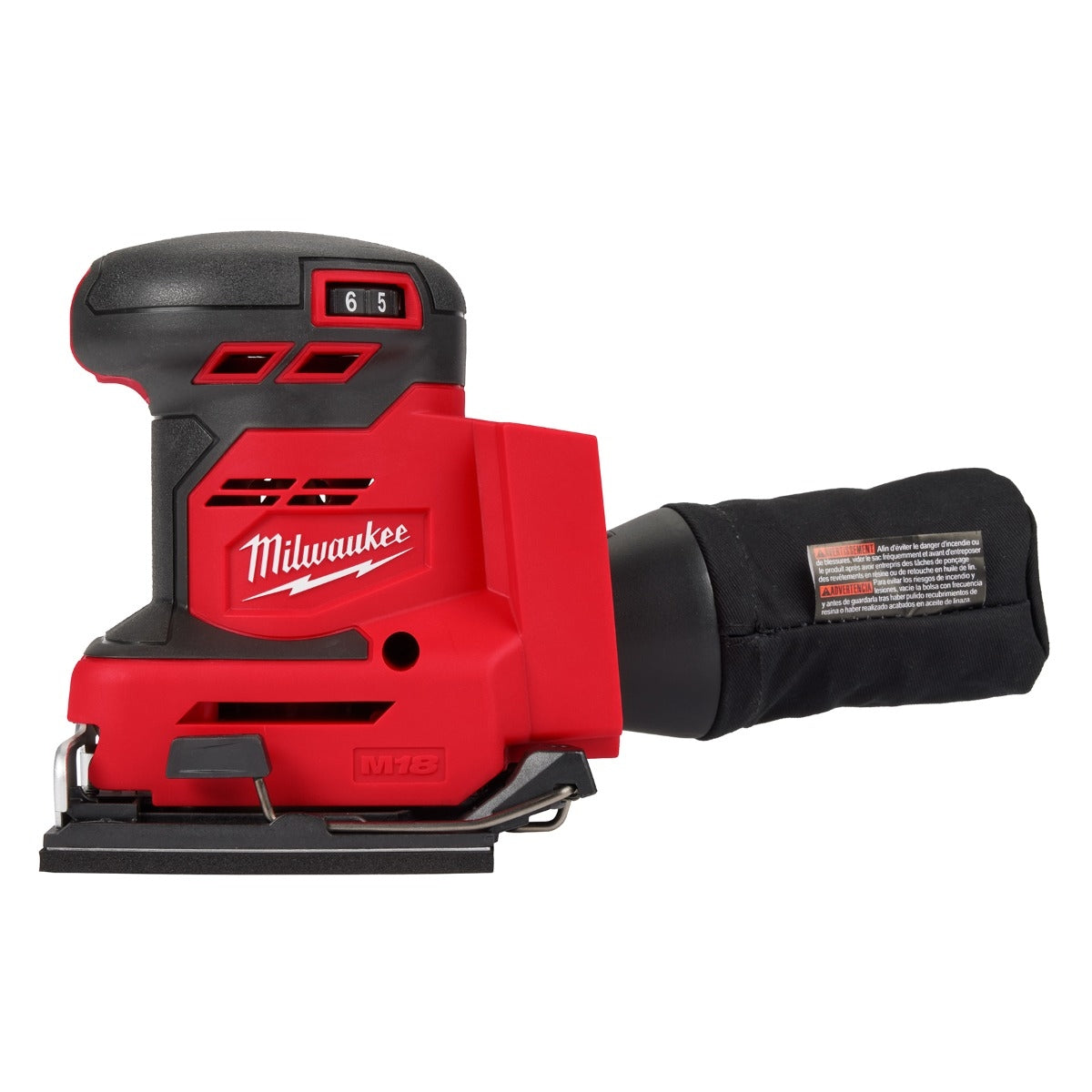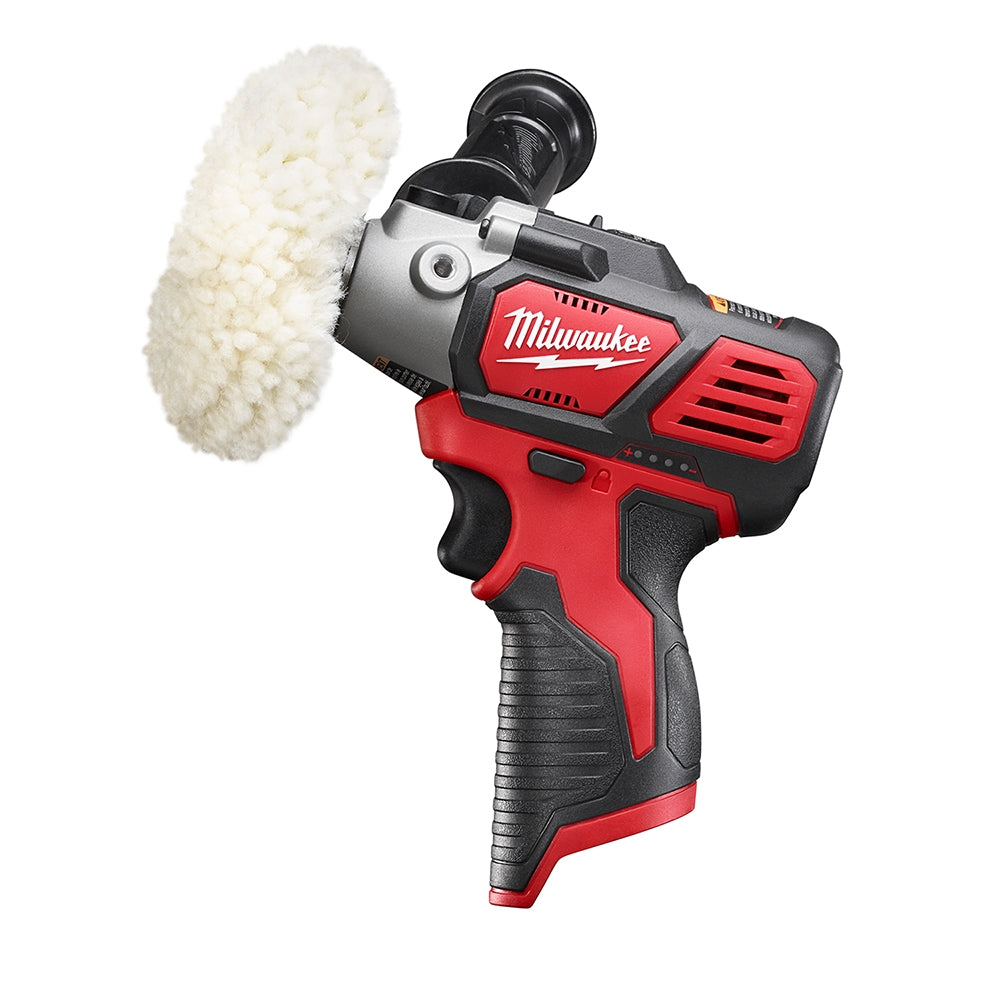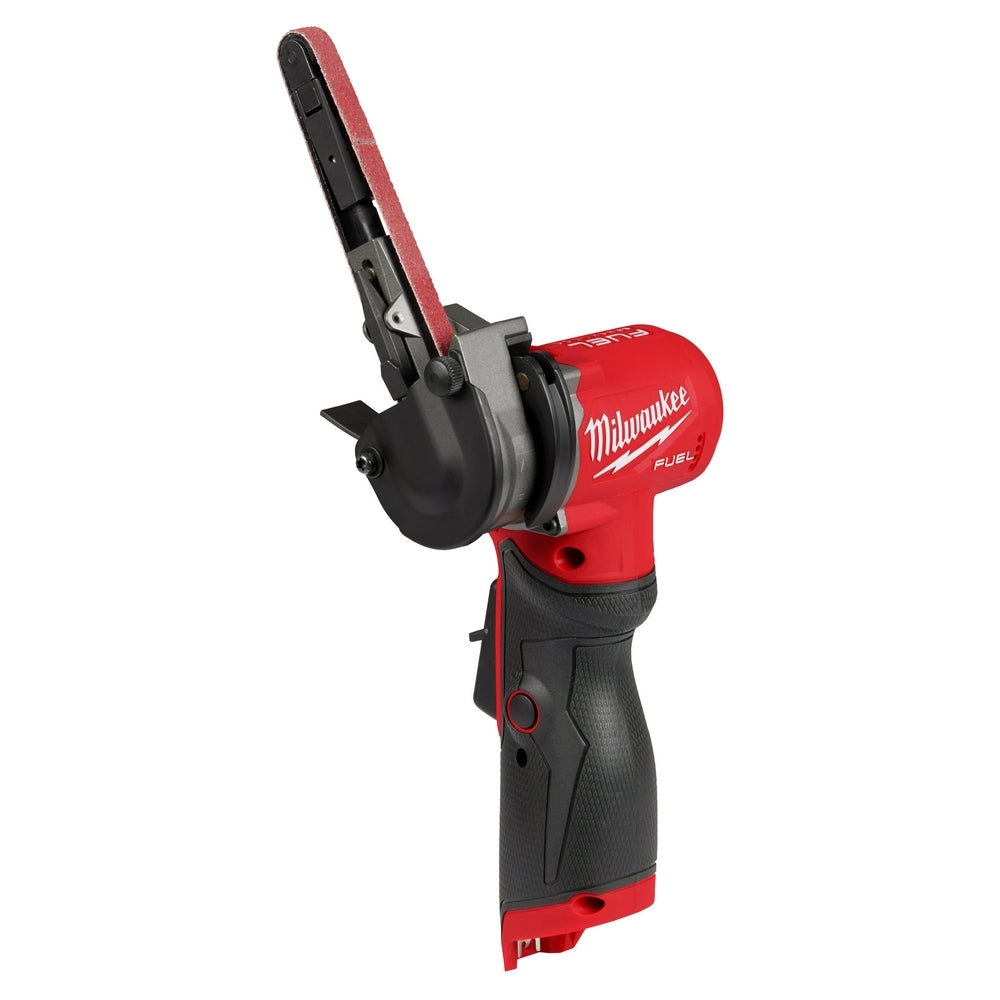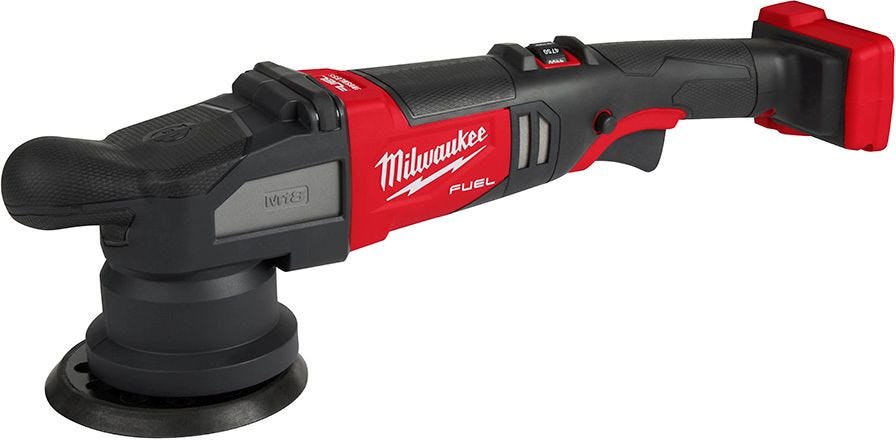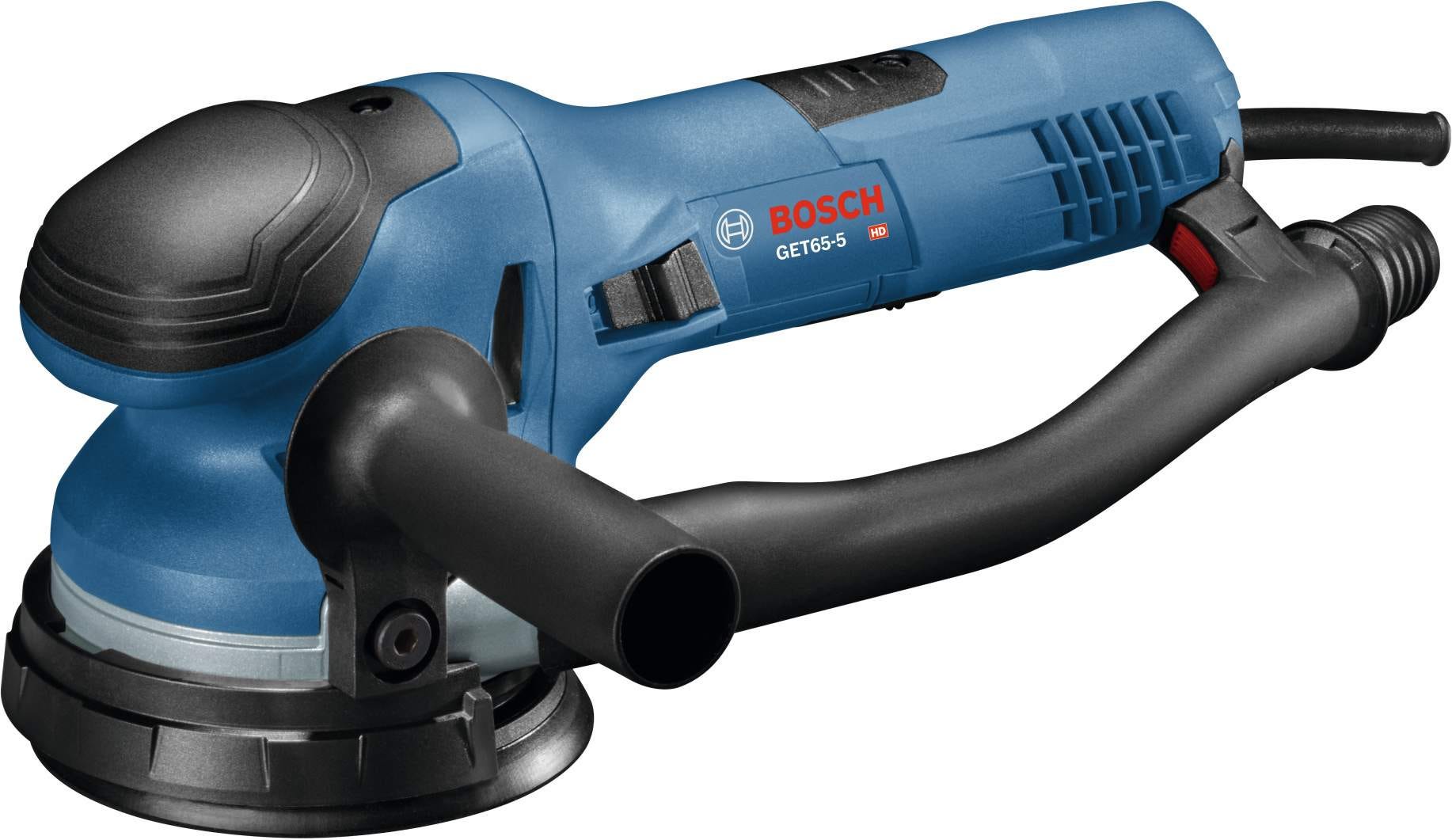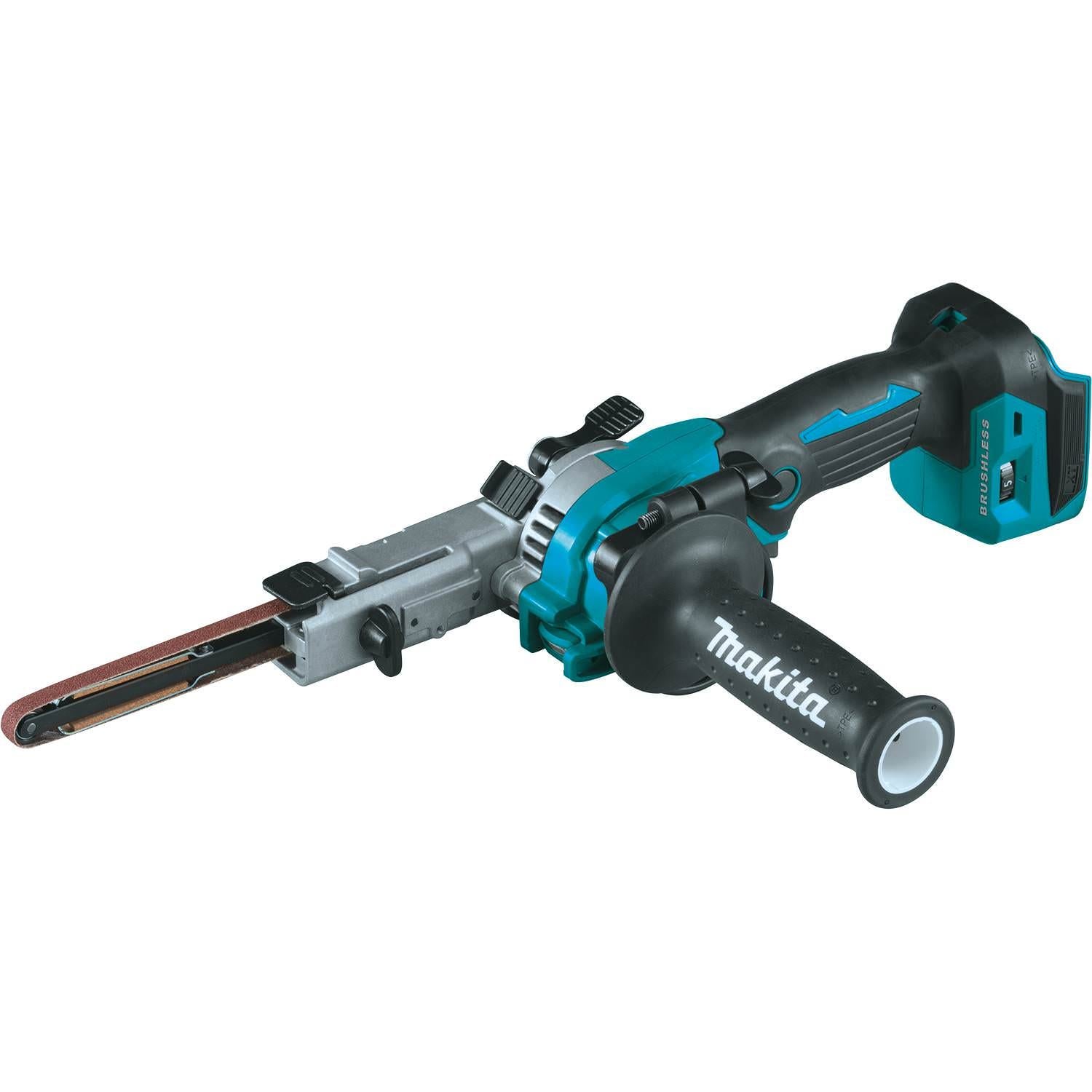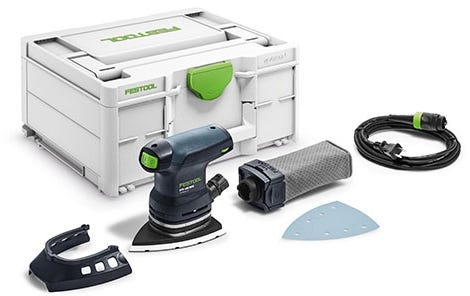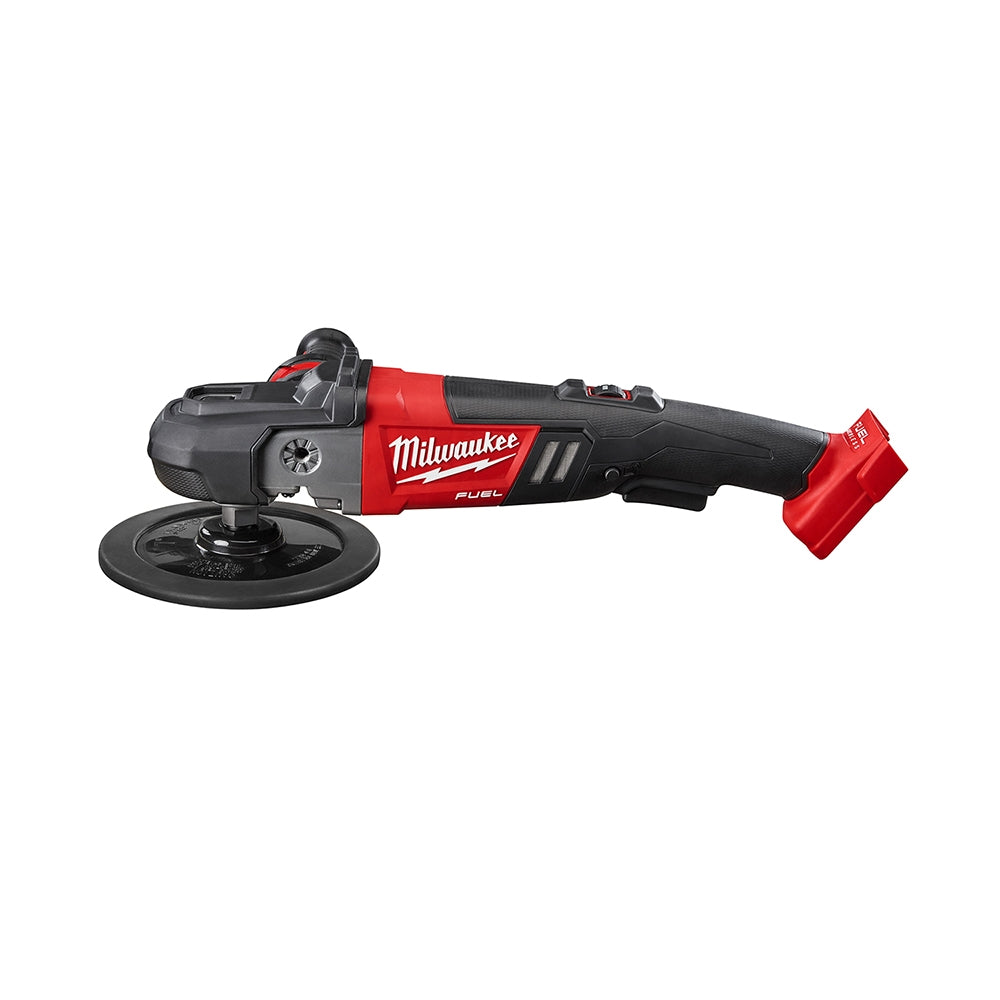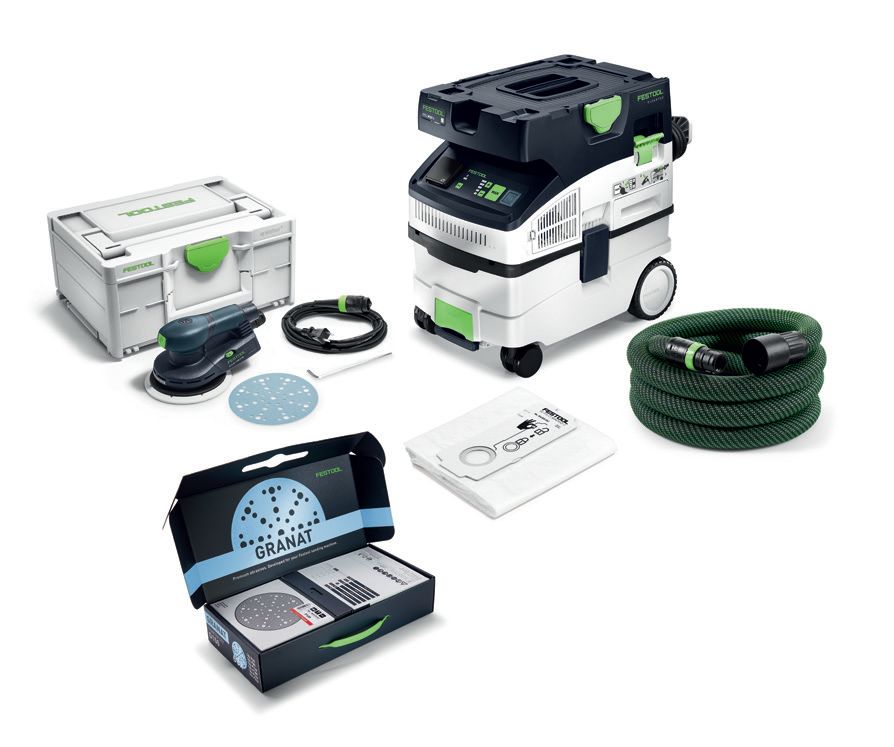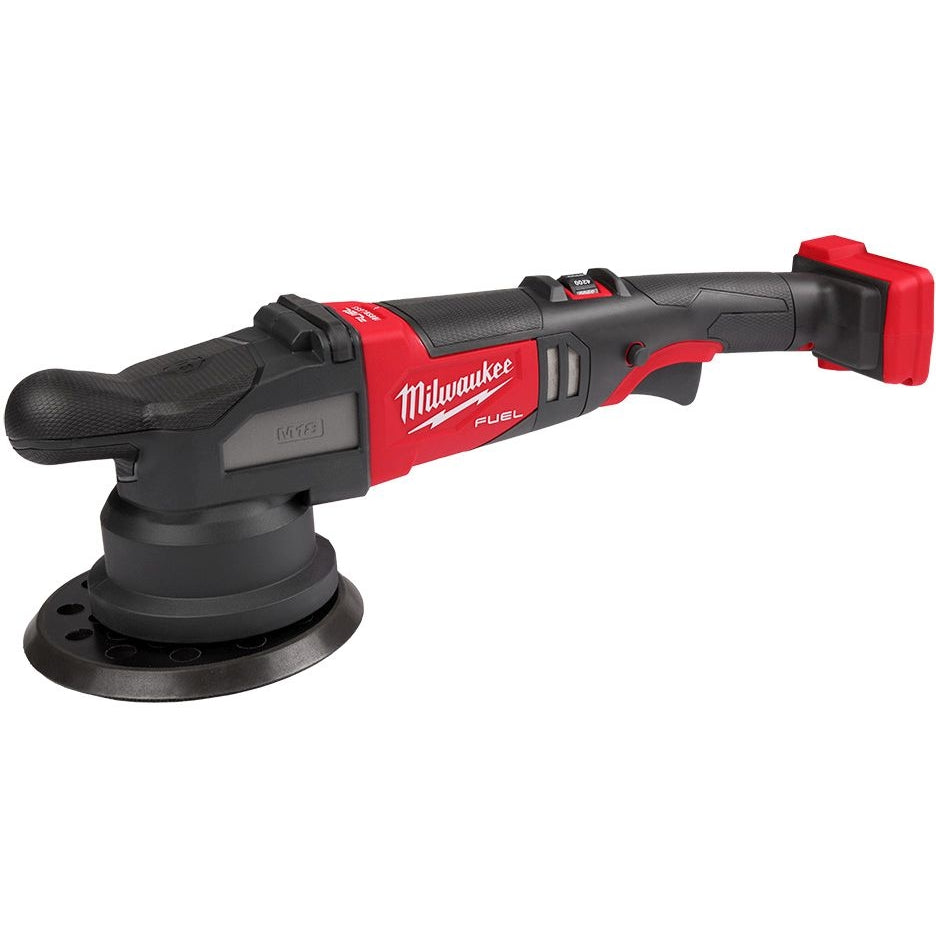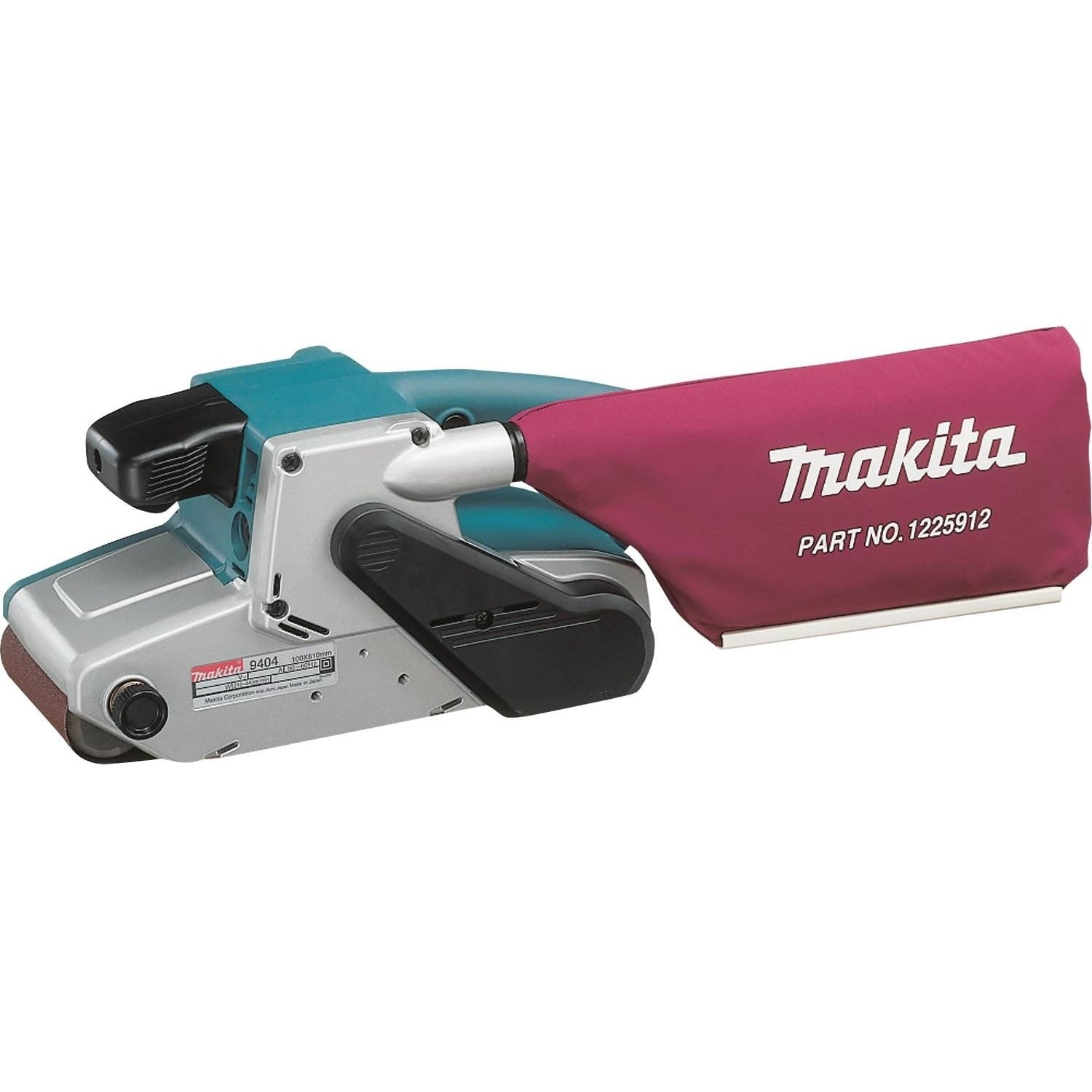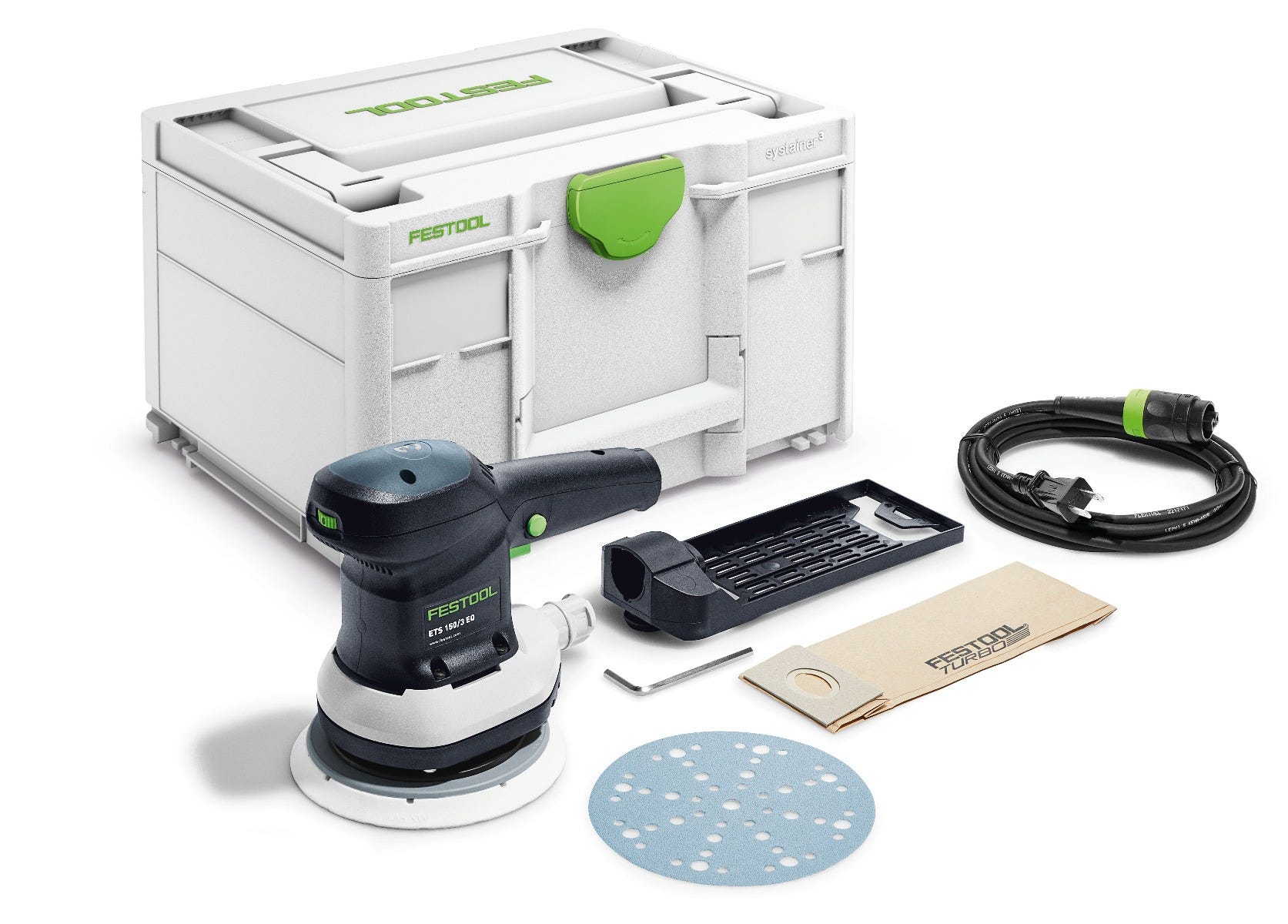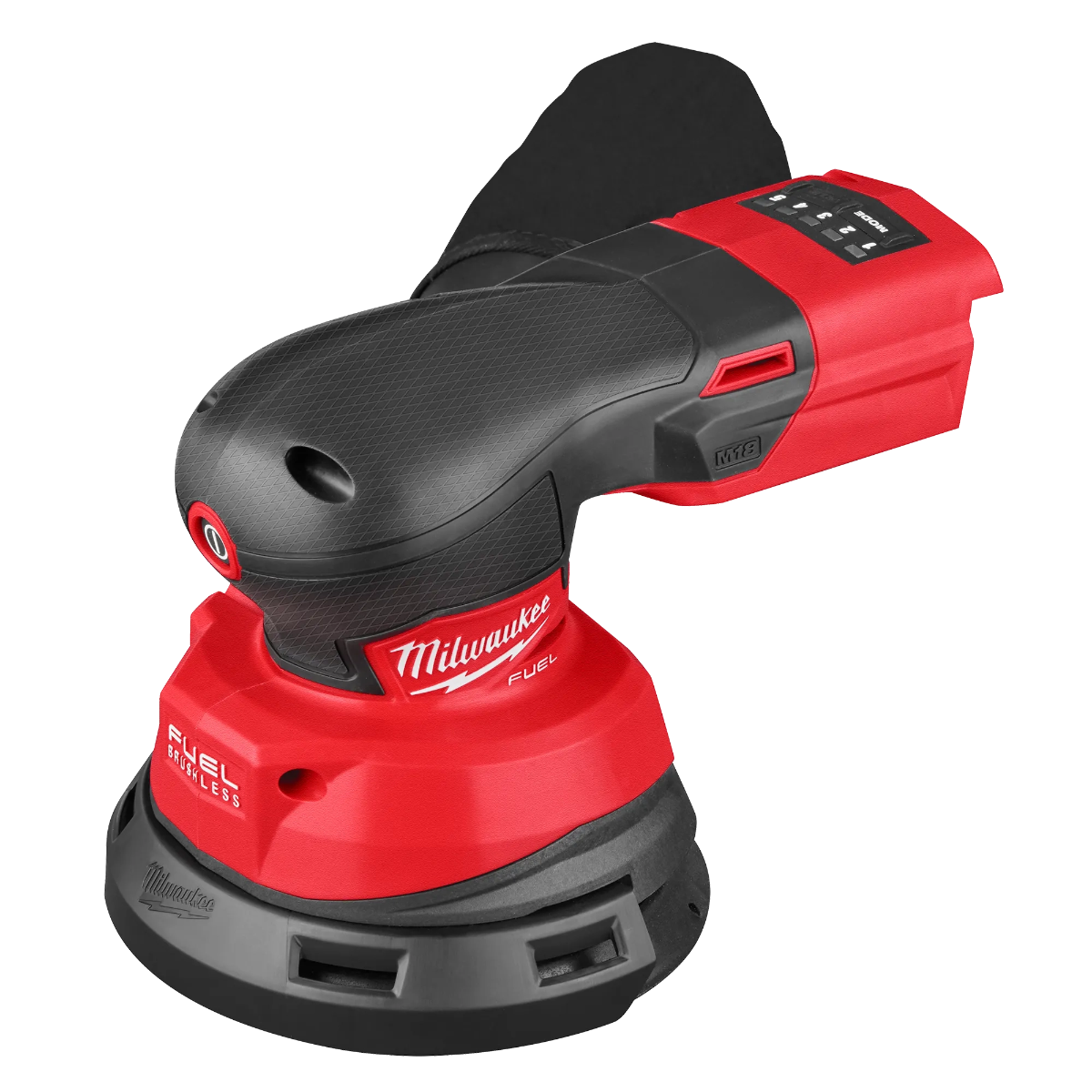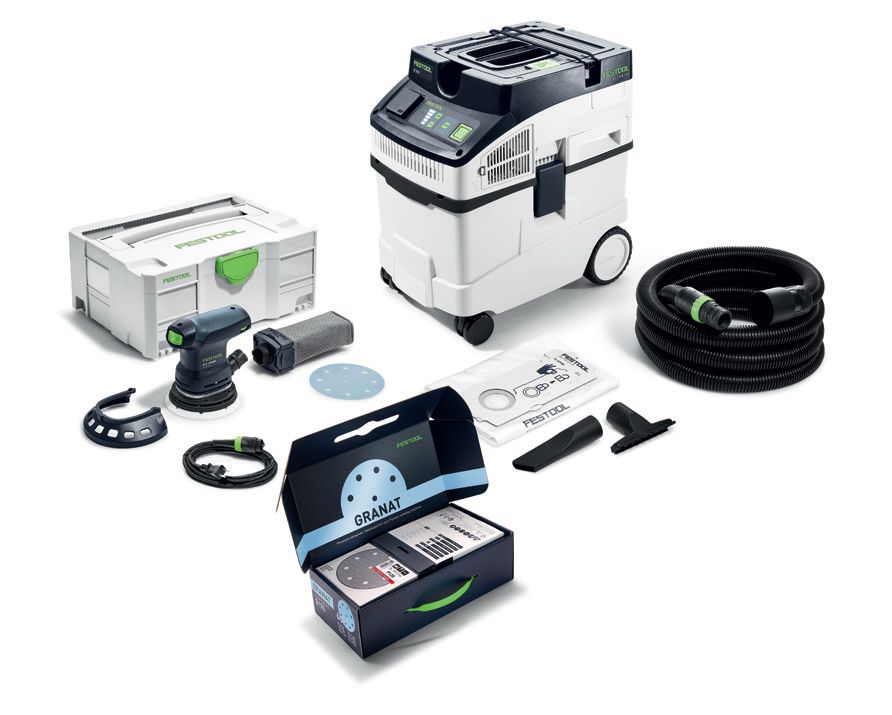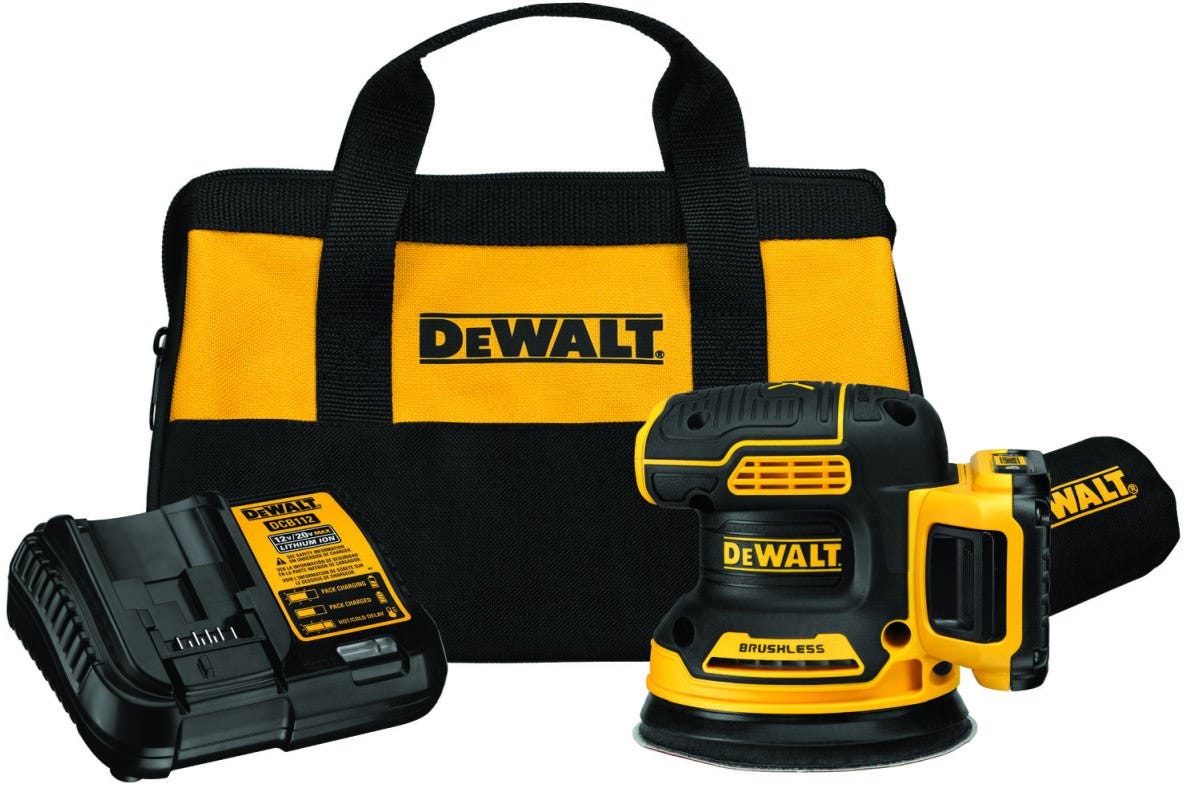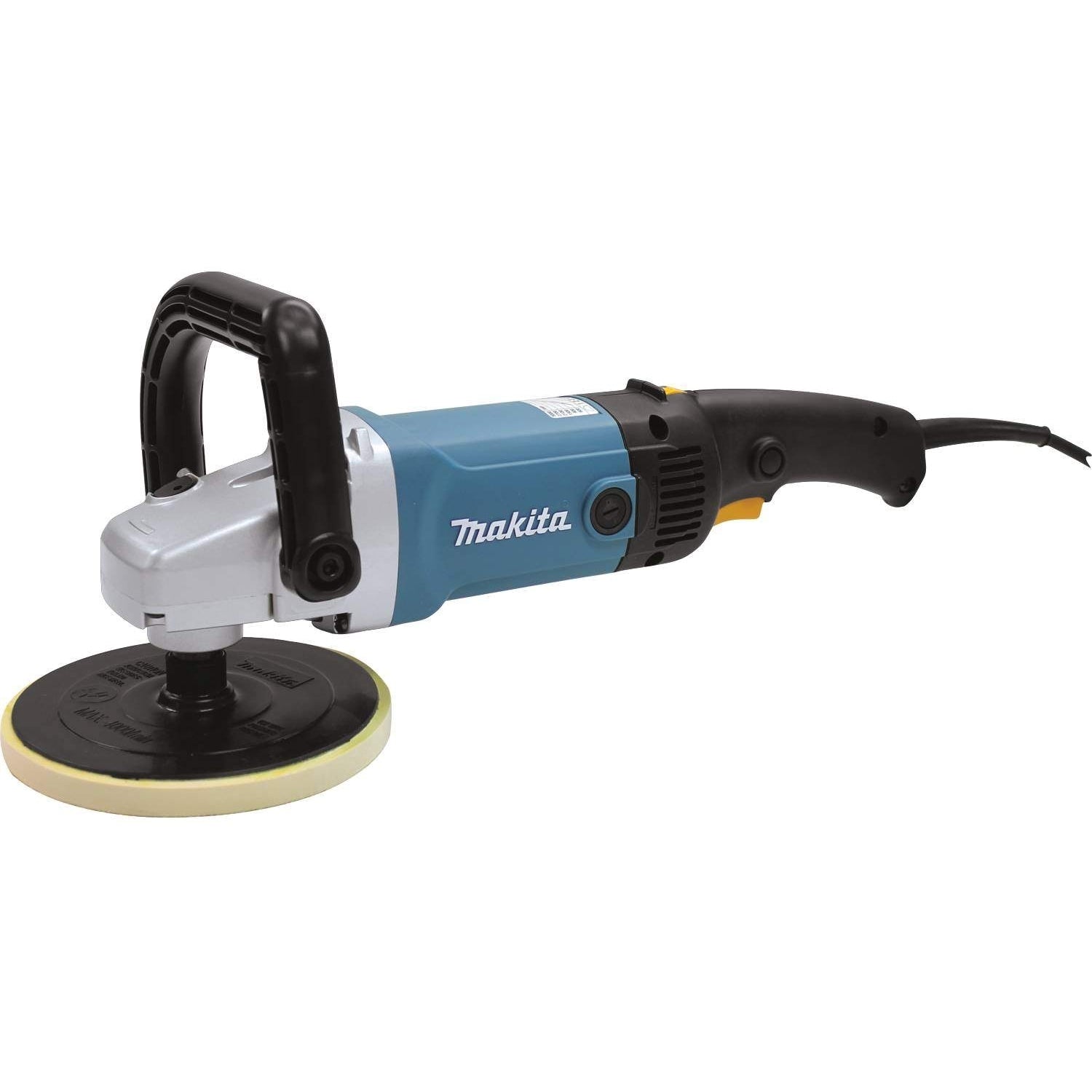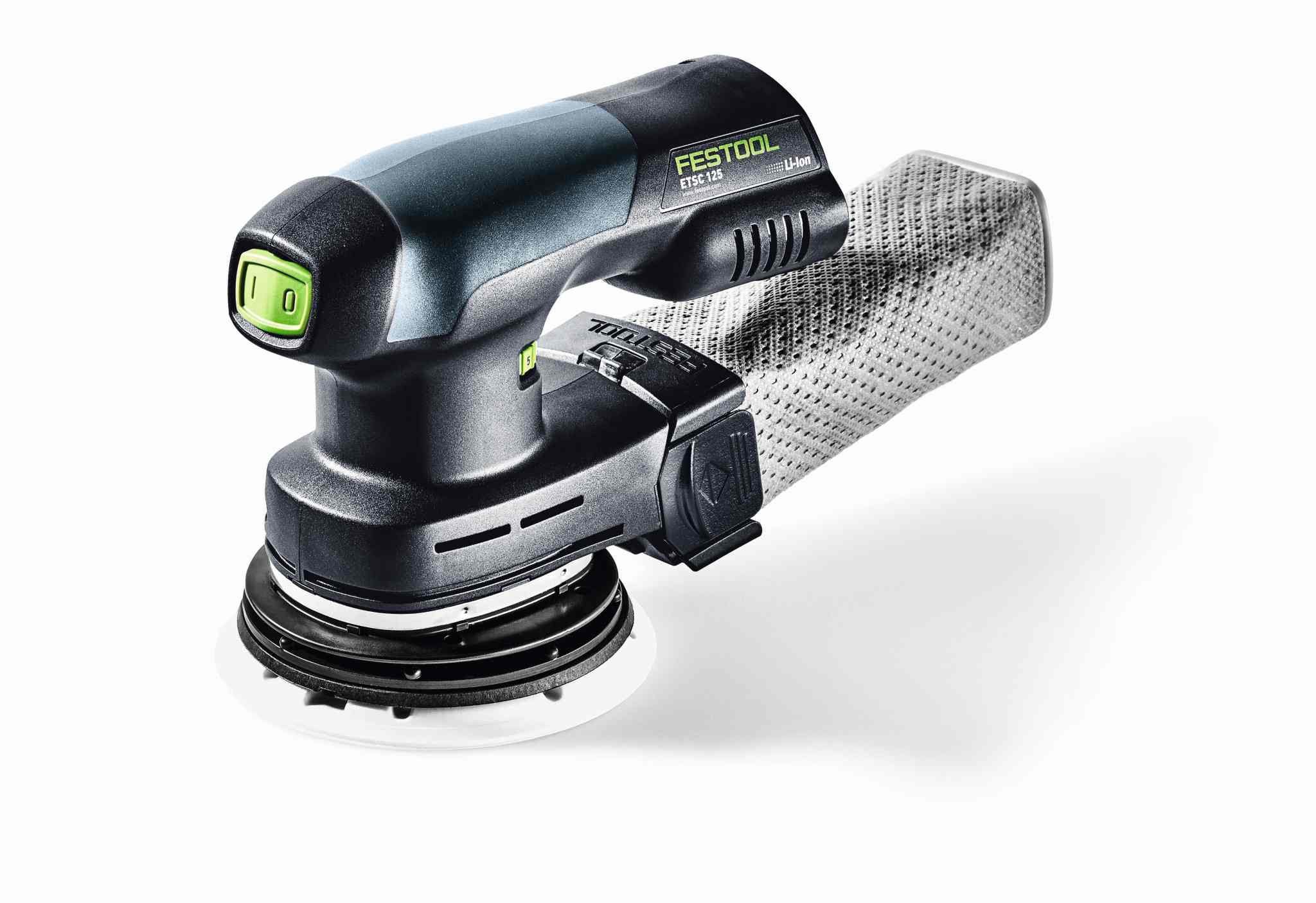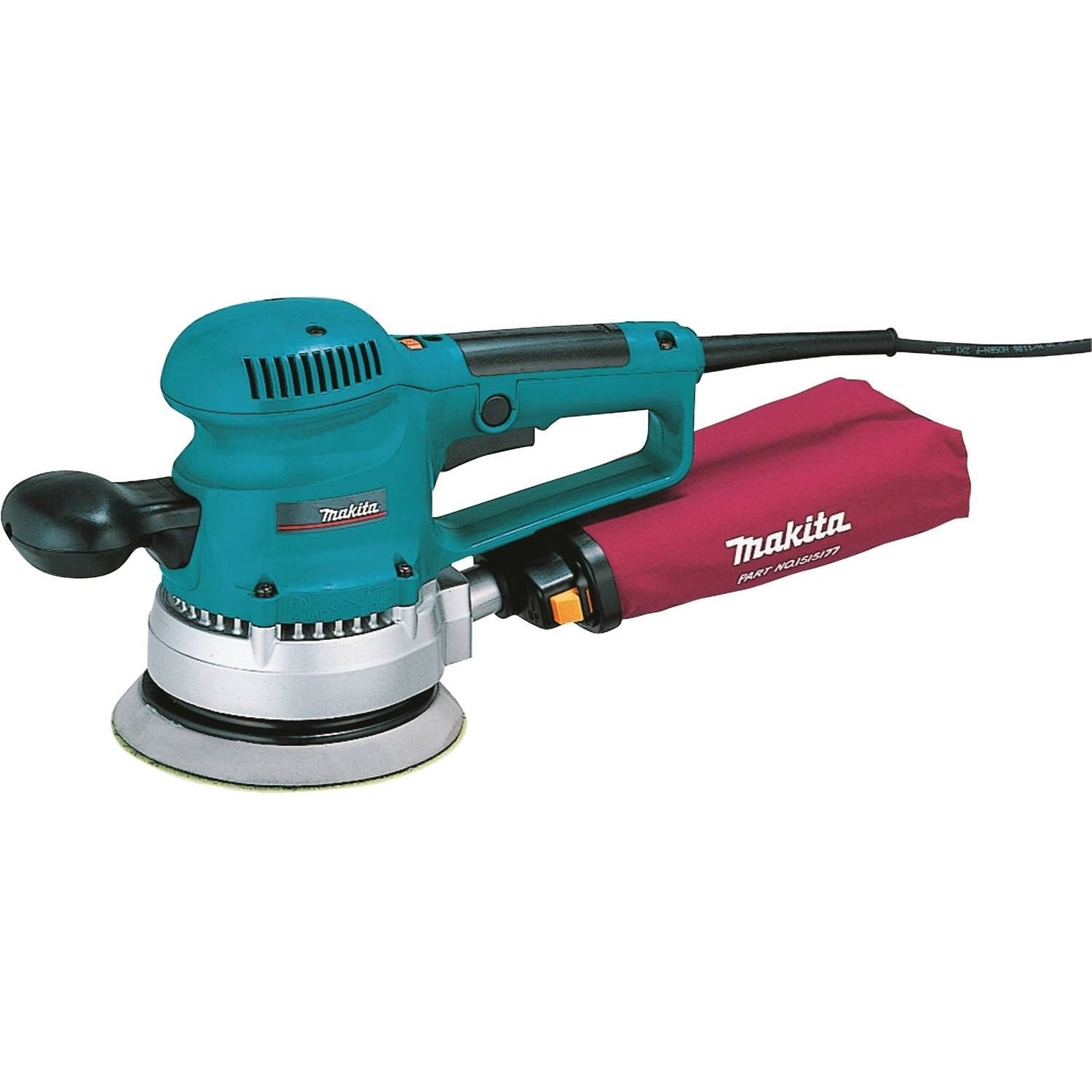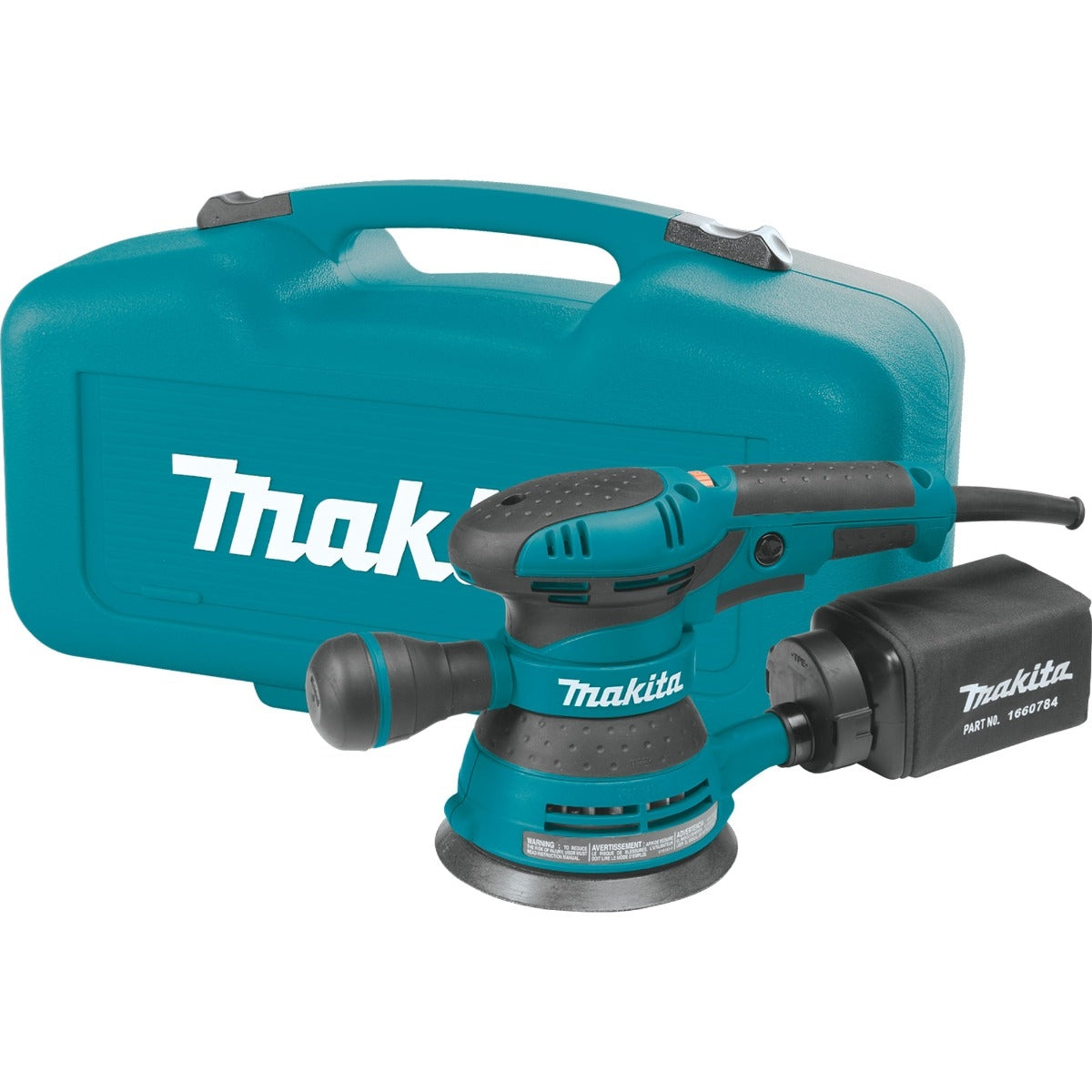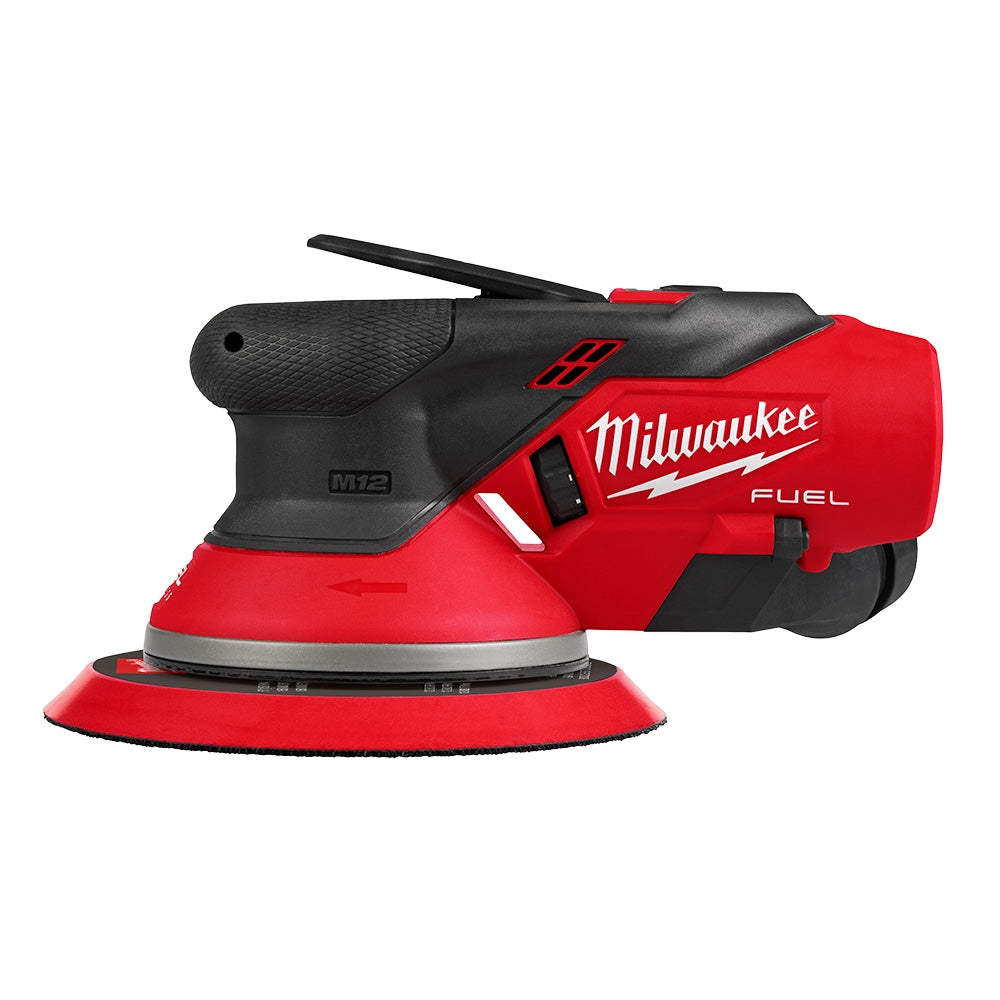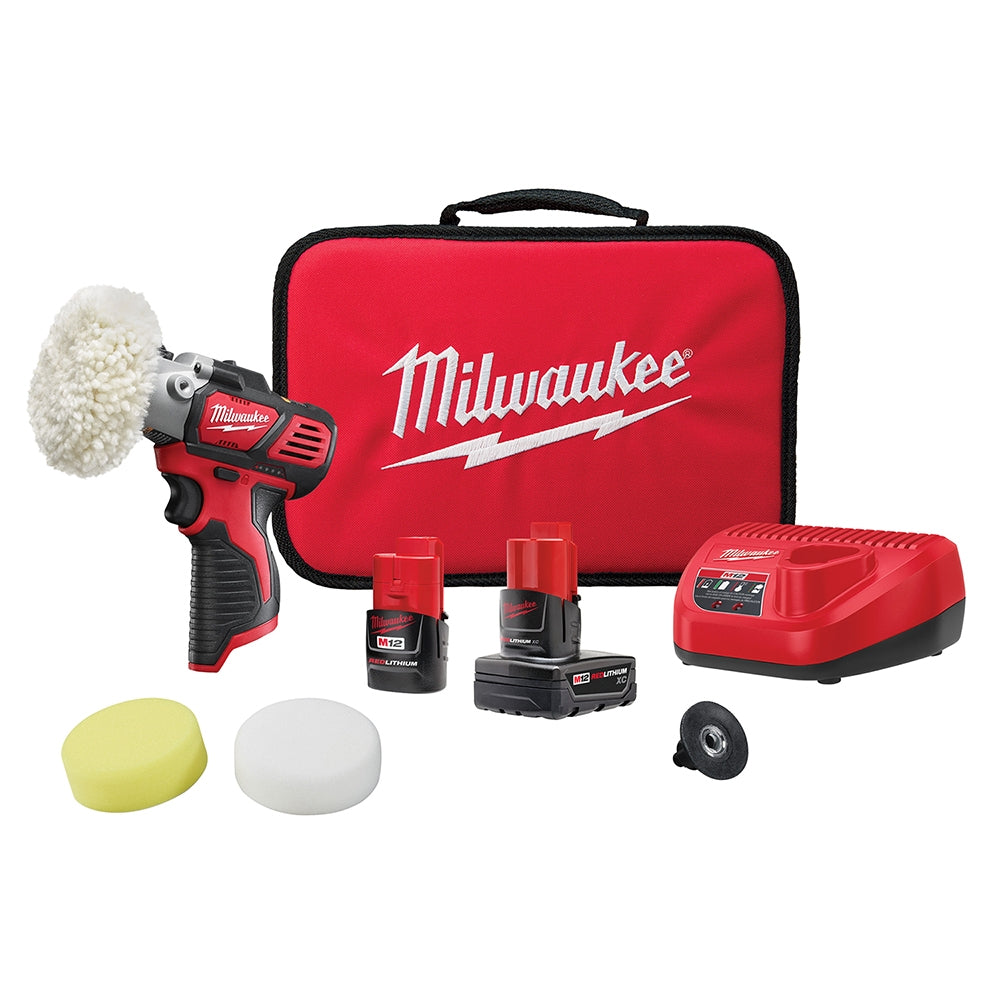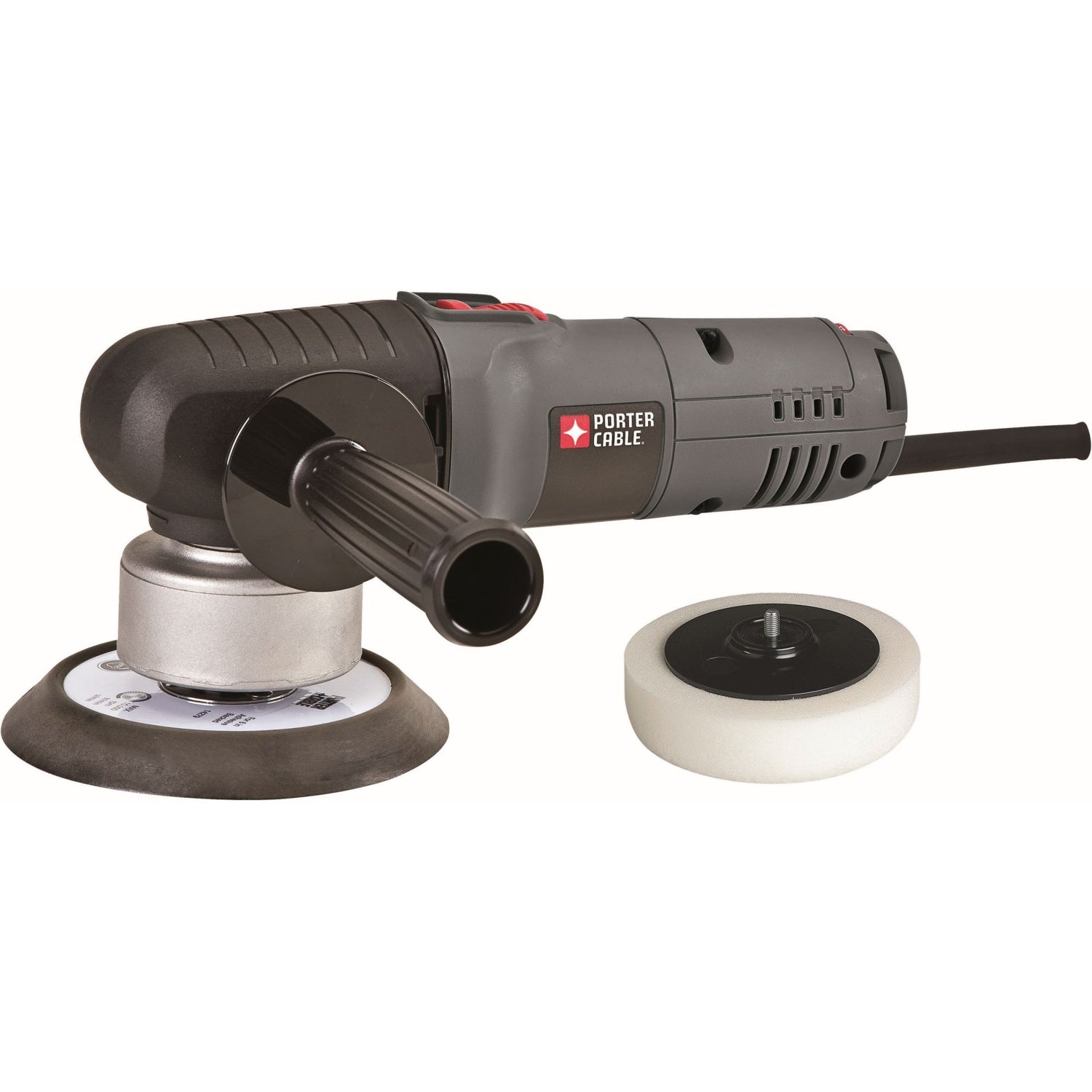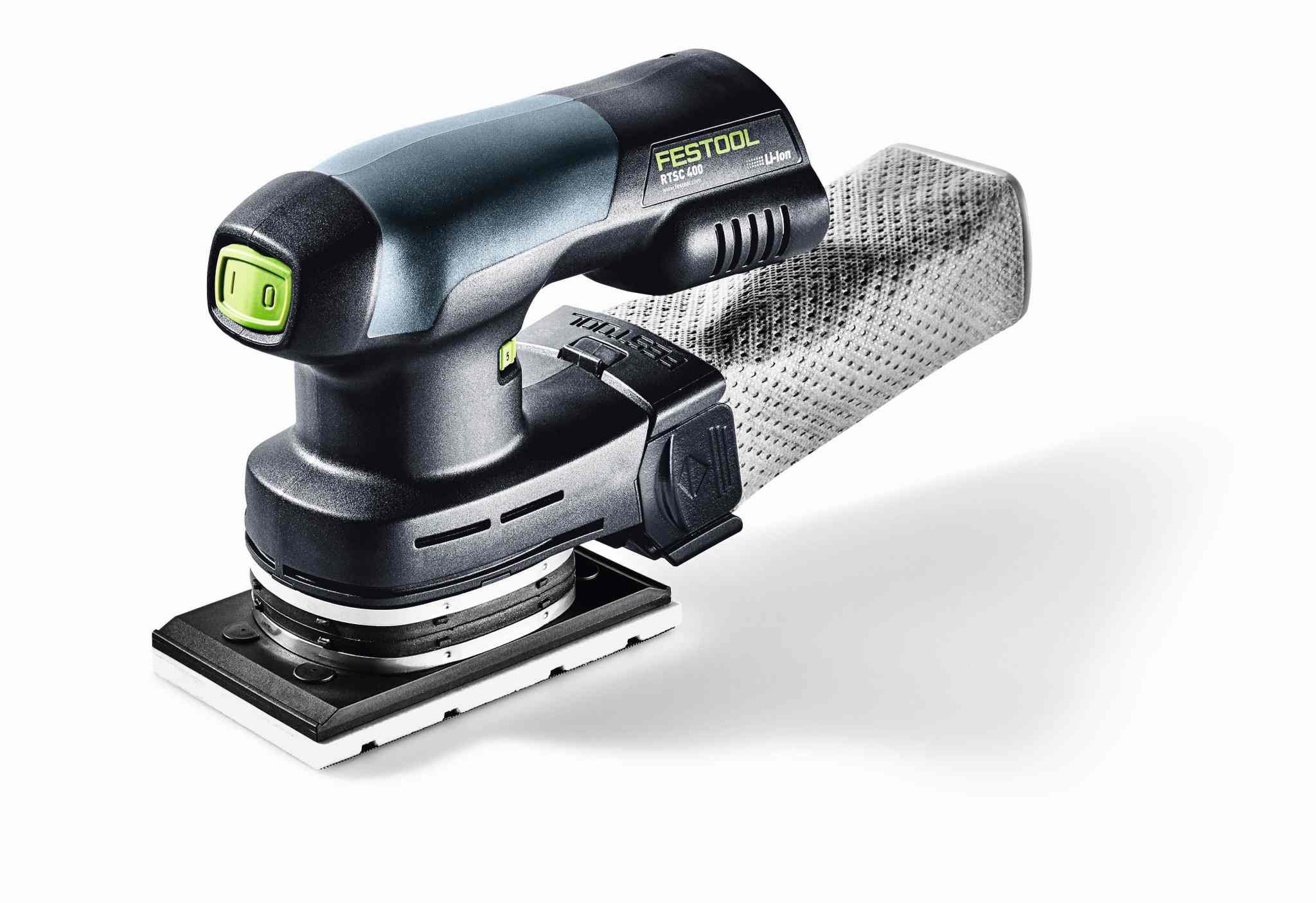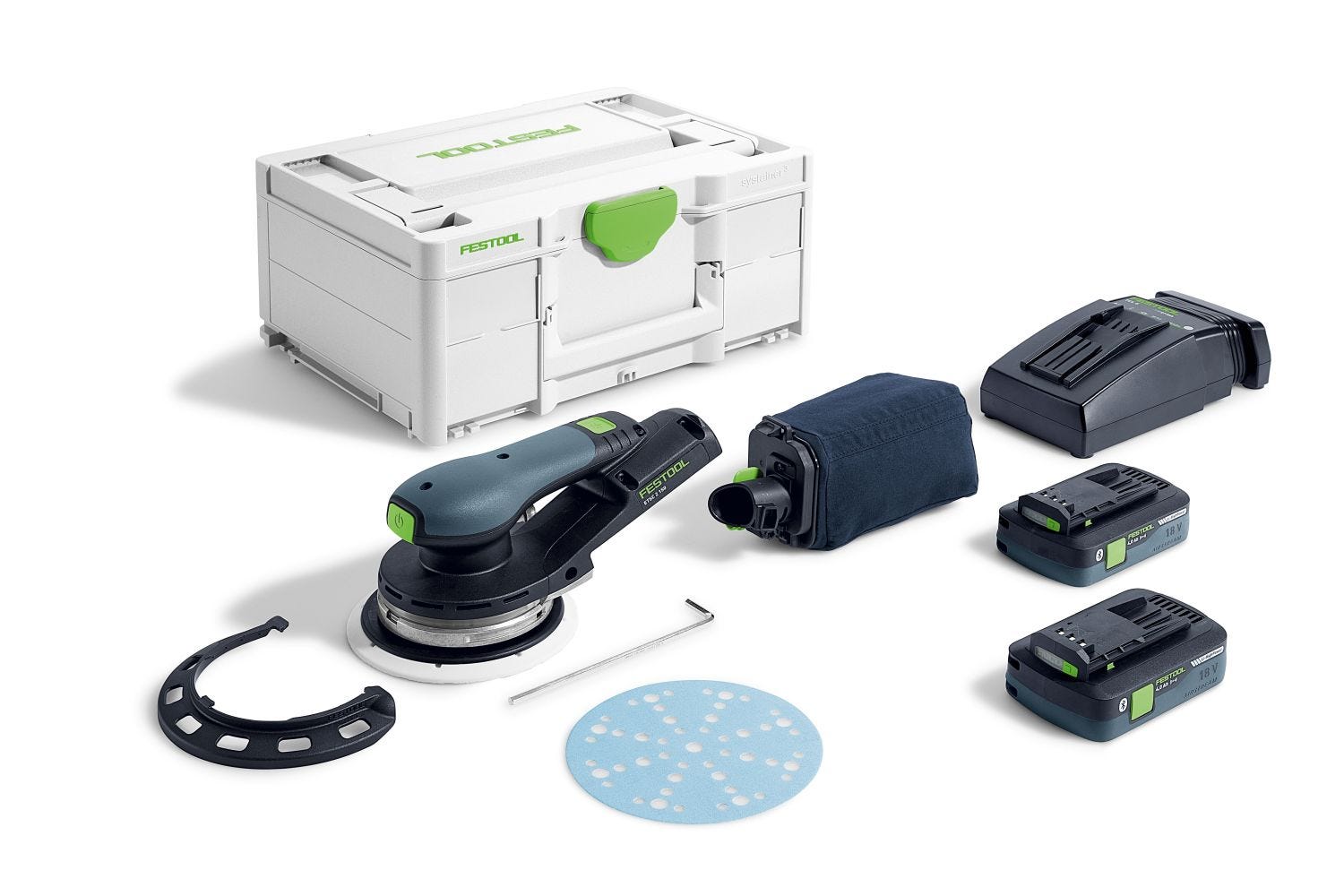
Collection:
Sanders / Polishers
Sanders and polishers are essential tools for achieving smooth, professional finishes on wood, metal, and automotive surfaces. Whether you're removing material, prepping for paint, or adding a high-gloss shine, these tools deliver power and precision for any job. From orbital and belt sanders to rotary and dual-action polishers, top brands like DeWALT, Makita, Milwaukee, and Festool offer durable, high-performance options for both professionals and DIYers.
174 products
Filter
Festool 576070 ETS 125 REQ-Plus 125mm (5") Random Orbital Sander w/ Systainer3
In Stock - Ready to Ship
Free Delivery
Regular price
$299.00
Sale price
$299.00
Regular price
Unit price
/per
Choose your option
DeWalt DCW210B 20V MAX XR Brushless 5" Cordless Sander, Tool Only
In Stock - Ready to Ship
Free Delivery
Regular price
$179.00
Sale price
$179.00
Regular price
$179.00
Unit price
/per
Choose your option
Festool 576028 RO 150 150mm (6") FEQ Rotex Sander w/ Systainer3
Backorder - Usually ships in 7-14 days
Free Delivery
Regular price
$739.00
Sale price
$739.00
Regular price
Unit price
/per
Choose your option
Milwaukee 2648-20 M18 Cordless 5-Inch Random Orbit Sander, Tool Only
In Stock - Ready to Ship
Regular price
$99.00
Sale price
$99.00
Regular price
$149.00
Unit price
/per
Choose your option
Festool 576339 ETS EC 150/5 EQ 150mm (6") Compact Brushless Finish Sander w/ Systainer3
In Stock - Ready to Ship
Free Delivery
Regular price
$649.00
Sale price
$649.00
Regular price
Unit price
/per
Choose your option
Festool 576340 ETS EC 125/3 EQ-Plus 125mm (5") Compact Brushless Finish Sander w/ Systainer3
In Stock - Ready to Ship
Free Delivery
Regular price
$549.00
Sale price
$549.00
Regular price
Unit price
/per
Choose your option
Festool 576054 RTS 400 REQ Orbital Sander w/ Systainer3
In Stock - Ready to Ship
Free Delivery
Regular price
$349.00
Sale price
$349.00
Regular price
Unit price
/per
Choose your option
Festool 571935 Planex Easy Drywall Sander
In Stock - Ready to Ship
Free Delivery
Regular price
$799.00
Sale price
$799.00
Regular price
Unit price
/per
Choose your option
Festool 576263 RO 90 DX FEQ-Plus Rotex Sander
In Stock - Ready to Ship
Free Delivery
Regular price
$579.00
Sale price
$579.00
Regular price
Unit price
/per
Choose your option
Festool 575994 Planex 2.0 Drywall Sander LHS 225 EQI-PLUS
In Stock - Ready to Ship
Free Delivery
Regular price
$1,599.00
Sale price
$1,599.00
Regular price
Unit price
/per
Choose your option
Milwaukee 2482-20 M12 FUEL 1/2" X 18" Bandfile Belt Sander, Tool Only
In Stock - Ready to Ship
Free Delivery
Regular price
$269.00
Sale price
$269.00
Regular price
Unit price
/per
Choose your option
Festool 576032 RO 125 FEQ-Plus Rotex 125mm (5") Multi-Mode Sander w/ Systainer3
Backorder - Usually ships in 7-14 days
Free Delivery
Regular price
$635.00
Sale price
$635.00
Regular price
Unit price
/per
Choose your option
Festool 576326 ETS EC 150/3 EQ 150mm (6") Compact Brushless Finish Sander w/ Systainer3
In Stock - Ready to Ship
Free Delivery
Regular price
$649.00
Sale price
$649.00
Regular price
Unit price
/per
Choose your option
Milwaukee 2832-20 M18 FUEL 3-in. x 18-in. Cordless Belt Sander
Backorder - Usually ships in 14-30 days
Free Delivery
Regular price
$329.00
Sale price
$329.00
Regular price
Unit price
/per
Choose your option
Milwaukee 2531-20 M12 FUEL Orbital Detail Sander, Tool Only
In Stock - Ready to Ship
Free Delivery
Regular price
$159.00
Sale price
$159.00
Regular price
$159.00
Unit price
/per
Choose your option
DeWALT DCW220B 20V MAX XR 3 in. x 21 in. Brushless Belt Sander, Tool Only
SOLD OUT
Free Delivery
Regular price
$249.00
Sale price
$249.00
Regular price
$329.00
Unit price
/per
Choose your option
Bosch GET75-6N Corded Dual Speed Multi-Mode 6" Random Orbit Sander w/ Turbo Mode
Backorder - Usually ships in 21-30 days
Free Delivery
Regular price
$349.00
Sale price
$349.00
Regular price
Unit price
/per
Choose your option
Makita XOB01Z 18V LXT Cordless 5" Sander, Tool Only
Backorder - Usually ships in 12-18 days
Free Delivery
Regular price
$149.00
Sale price
$149.00
Regular price
$149.00
Unit price
/per
Choose your option
Milwaukee 2535-20 M12 FUEL 3 in. Random Orbital Detail Sander, Tool Only
In Stock - Ready to Ship
Free Delivery
Regular price
$199.00
Sale price
$199.00
Regular price
$199.00
Unit price
/per
Choose your option
Dewalt DCE800B 20V MAX Cordless 9" Drywall Sander, Tool Only
In Stock - Ready to Ship
Free Delivery
Regular price
$536.99
Sale price
$536.99
Regular price
Unit price
/per
Choose your option
DeWalt DCW200B 20V MAX XR Brushless 1/4-Sheet Cordless Sander, Tool Only
Backorder - Usually ships in 14-30 days
Free Delivery
Regular price
$179.00
Sale price
$179.00
Regular price
$179.00
Unit price
/per
Choose your option
Makita 9403 Corded 4" x 24" Belt Sander
In Stock - Ready to Ship
Free Delivery
Regular price
$419.00
Sale price
$419.00
Regular price
$419.00
Unit price
/per
Choose your option
Makita BO6050J Corded 6" Random Orbit Sander
Backorder - Usually ships in 12-18 days
Free Delivery
Regular price
$459.00
Sale price
$459.00
Regular price
$459.00
Unit price
/per
Choose your option
Milwaukee 2649-20 M18 1/4-Sheet Orbital Sander
SOLD OUT
Regular price
$126.65
Sale price
$126.65
Regular price
$126.65
Unit price
/per
Choose your option
Milwaukee 2438-20 M12 Variable Speed Polisher/Sander
Backorder - Usually ships in 14-30 days
Free Delivery
Regular price
$199.00
Sale price
$199.00
Regular price
$199.00
Unit price
/per
Choose your option
Milwaukee 2483-20 M12 FUEL 3/8" X 13" Bandfile Belt Sander, Tool Only
Backorder - Usually ships in 14-30 days
Free Delivery
Regular price
$269.00
Sale price
$269.00
Regular price
Unit price
/per
Choose your option
Milwaukee 2684-20 M18 FUEL 5-inch 15mm Random Orbital Polisher, Tool Only
In Stock - Ready to Ship
Free Delivery
See Price in Cart
Choose your option
Bosch GET65-5N Corded Dual Speed Multi-Mode 5" Random Orbit Sander w/ Turbo Mode
Backorder - Usually ships in 21-30 days
Free Delivery
Regular price
$329.00
Sale price
$329.00
Regular price
Unit price
/per
Choose your option
Makita XSB01Z 18V LXT Brushless 3/8-Inch x 21-Inch Detail Belt Sander, Tool Only
Backorder - Usually ships in 12-18 days
Free Delivery
Regular price
$374.00
Sale price
$374.00
Regular price
$374.00
Unit price
/per
Choose your option
Festool 577520 DTS 400 REQ Orbital Sander w/ Systainer3
In Stock - Ready to Ship
Free Delivery
Regular price
$349.00
Sale price
$349.00
Regular price
Unit price
/per
Choose your option
Milwaukee 2738-20 M18 7" Variable Speed Polisher (Tool Only)
In Stock - Ready to Ship
Free Delivery
Regular price
$329.00
Sale price
$329.00
Regular price
$329.00
Unit price
/per
Choose your option
Festool 578867 Limited Edition ETS EC 150/5 Sander + CT MIDI I HEPA Dust Extractor w/ 60-Piece Granat Abrasives Value Kit
Backorder - Usually ships in 7-14 days
Free Delivery
Regular price
$1,280.88
Sale price
$1,280.88
Regular price
Unit price
/per
Choose your option
Milwaukee 2685-20 M18 FUEL 6-inch 21mm Random Orbital Polisher, Tool Only
In Stock - Ready to Ship
Free Delivery
See Price in Cart
Choose your option
Makita 9404 Corded 4" x 24" Belt Sander, with Variable Speed
In Stock - Ready to Ship
Free Delivery
Regular price
$419.00
Sale price
$419.00
Regular price
$419.00
Unit price
/per
Choose your option
Festool 576079 ETS 150/3 EQ 150mm (6") Random Orbital Sander w/ Systainer3
SOLD OUT
Free Delivery
Regular price
$469.00
Sale price
$469.00
Regular price
Unit price
/per
Choose your option
Milwaukee 2837-20 M18 FUEL 5 in. Random Orbital Sander, Tool Only
In Stock - Ready to Ship
Free Delivery
Regular price
$229.00
Sale price
$229.00
Regular price
$229.00
Unit price
/per
Choose your option
Festool 578984 Limited Edition ETS 125 REQ Sander + CT 25 HEPA Dust Extractor w/ 60-Piece Granat Abrasives Value Kit
Backorder - Usually ships in 7-14 days
Free Delivery
Regular price
$776.32
Sale price
$776.32
Regular price
Unit price
/per
Choose your option
DeWalt DCW210D1 20V MAX XR Brushless 5-Inch Cordless Sander 2.0Ah Kit
Backorder - Usually ships in 14-30 days
Free Delivery
Regular price
$259.00
Sale price
$259.00
Regular price
Unit price
/per
Choose your option
Makita 9227C Corded 7" Polisher
Backorder - Usually ships in 12-18 days
Free Delivery
Regular price
$349.00
Sale price
$349.00
Regular price
$349.00
Unit price
/per
Choose your option
Festool 576822 ETSC 125 18V Brushless Hybrid Cordless 125mm (5-Inch) Sander BASIC
In Stock - Ready to Ship
Free Delivery
Regular price
$299.00
Sale price
$299.00
Regular price
Unit price
/per
Choose your option
Makita BO6030 Corded 6" Random Orbit Sander
In Stock - Ready to Ship
Free Delivery
Regular price
$299.00
Sale price
$299.00
Regular price
$299.00
Unit price
/per
Choose your option
Makita BO5041K Corded 5" Random Orbit Sander Kit
Backorder - Usually ships in 12-18 days
Free Delivery
Regular price
$149.00
Sale price
$149.00
Regular price
$149.00
Unit price
/per
Choose your option
Milwaukee 2585-20 M12 FUEL 6" Random Orbital Sander (3/16")
In Stock - Ready to Ship
Free Delivery
Regular price
$329.00
Sale price
$329.00
Regular price
Unit price
/per
Choose your option
Milwaukee 2438-22X M12 Variable Speed Polisher/Sander Kit
In Stock - Ready to Ship
Free Delivery
Regular price
$309.00
Sale price
$309.00
Regular price
Unit price
/per
Choose your option
PORTER-CABLE 7346SP Corded 6" Variable-Speed Random Orbit Sander with Polishing Pad
Backorder - Usually ships in 20-30 days
Free Delivery
Regular price
$179.00
Sale price
$179.00
Regular price
Unit price
/per
Choose your option
Festool 576346 RTSC 400 18V Brushless Hybrid Cordless Sander BASIC
In Stock - Ready to Ship
Free Delivery
Regular price
$349.00
Sale price
$349.00
Regular price
Unit price
/per
Choose your option
Festool 577728 Cordless 18V ETSC 2 150mm (6-inch) Sander 4.0Ah Kit
In Stock - Ready to Ship
Free Delivery
Regular price
$739.00
Sale price
$739.00
Regular price
Unit price
/per


